There’s so much to do and see in Seville, Spain! This 3-day Seville itinerary will help you make the most of your visit and ensure you see the top attractions!
This post contains affiliate links, from which we may receive a commission. You can read our full affiliate disclosure here.
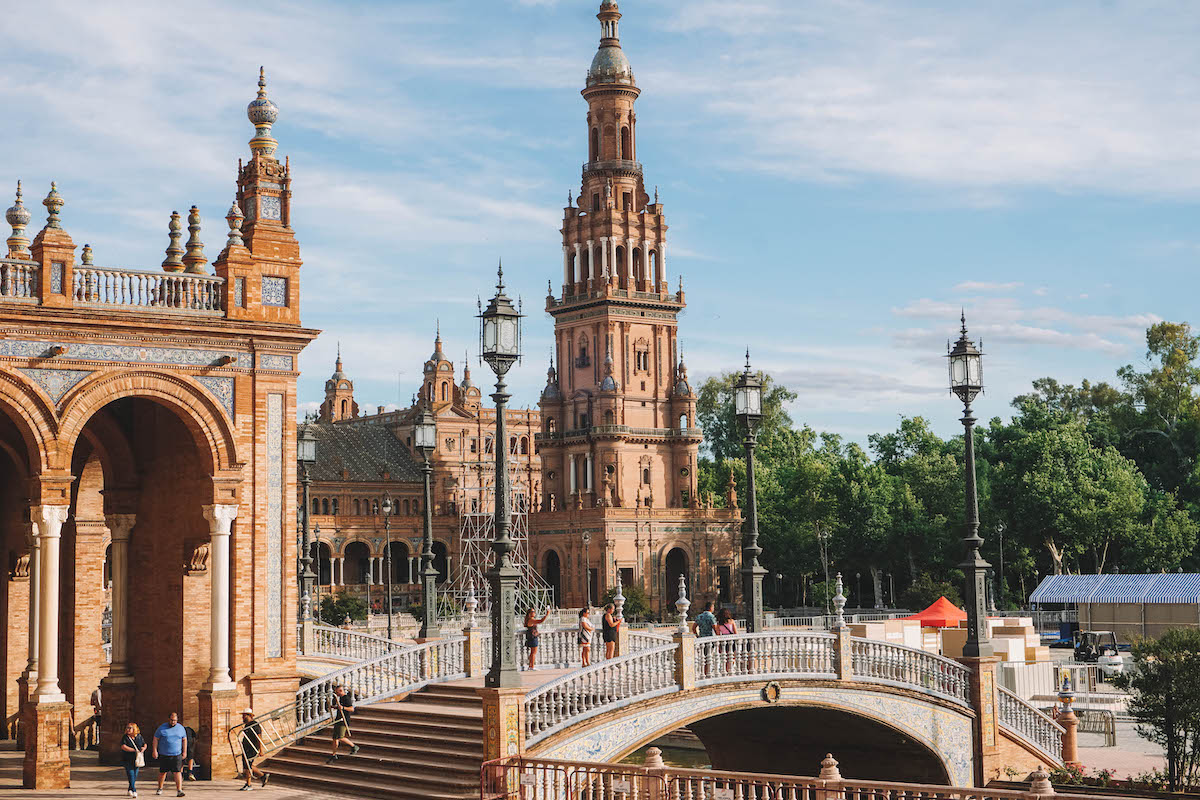
No trip to Andalucía is complete without visiting its capital city, Seville. This port city is known for its Mudejar architecture, palaces, and flamenco — and the food is incredible, to boot!
When planning a trip to Seville, I recommend spending at least three full days there to fully appreciate its beauty and see the city’s top attractions. However, if you don’t have that much time, this 3-day Seville itinerary can still help you plan your trip!
I’ve broken down the full Seville itinerary into 1-, 2-, and 3-day chunks so you can adjust it to suit your travel plans. Without further adieu, here’s what to do in Seville in 3 days!
Table of Contents
Click “show” to see the full table of contents for this post. You can jump around the post as desired by clicking on the individual sections listed below.
Map of the Top Attractions in Seville
Here are the best things to do in Seville in 3 days, color coded by days. I’ve marked the top sites in Seville, Spain on the map below and have gone into detail about each one in the body of this post.
Day 1 in Seville
The first day of this 3-day itinerary for Seville is packed with fun things to do! Prepare to be on your feet all day, noting that every site I’ve mentioned on today’s itinerary has plenty of shady spots to sit down and rest.
Take a break when needed, and remember to keep drinking water (even indoors!). The Spanish heat isn’t to be taken lightly!
Royal Alcázar of Seville
Time needed: Half day
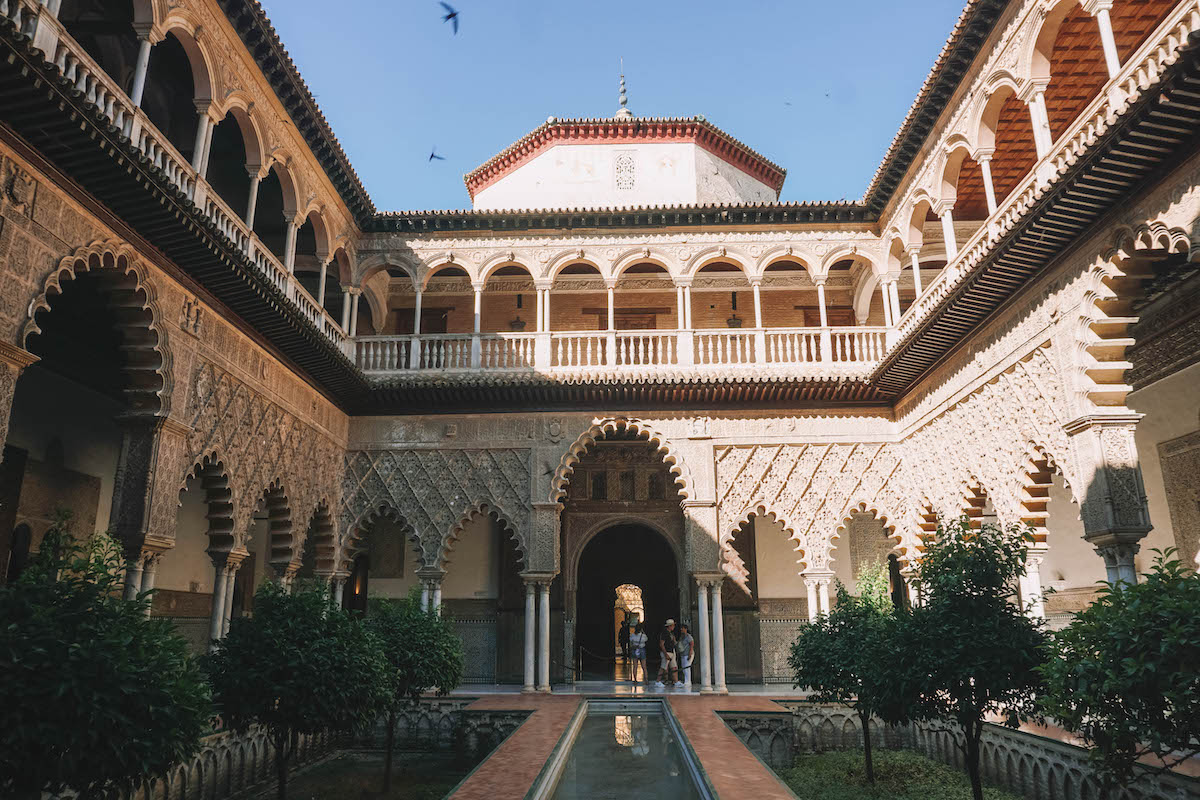
Built at the start of the 10th century under the Caliph of Cordoba, Abdurrahman III an-Nasir, the Alcazar of Seville served as the center of the Muslim government. Its strategic position next to the port was intentional — the port is where the city made most of its money, so it makes sense why the Caliph would want to be nearby looking after his financial interests.
After Seville was conquered by the Christians in 1248, the Alcazar also became the royal residence of the king and queen of Spain — a role it maintains to this very day, making it the oldest royal residence in Europe that’s still in use!
The Alcazar palace complex was built in a mixture of Muslim and Mudejar architecture (Mudejar meaning built by Christians but in the Muslim style). The royal bedrooms are still used by the Spanish royal family and can only be accessed on a guided tour, which you must book an extra timed ticket for.
Book your tickets to the Royal Alcázar here.
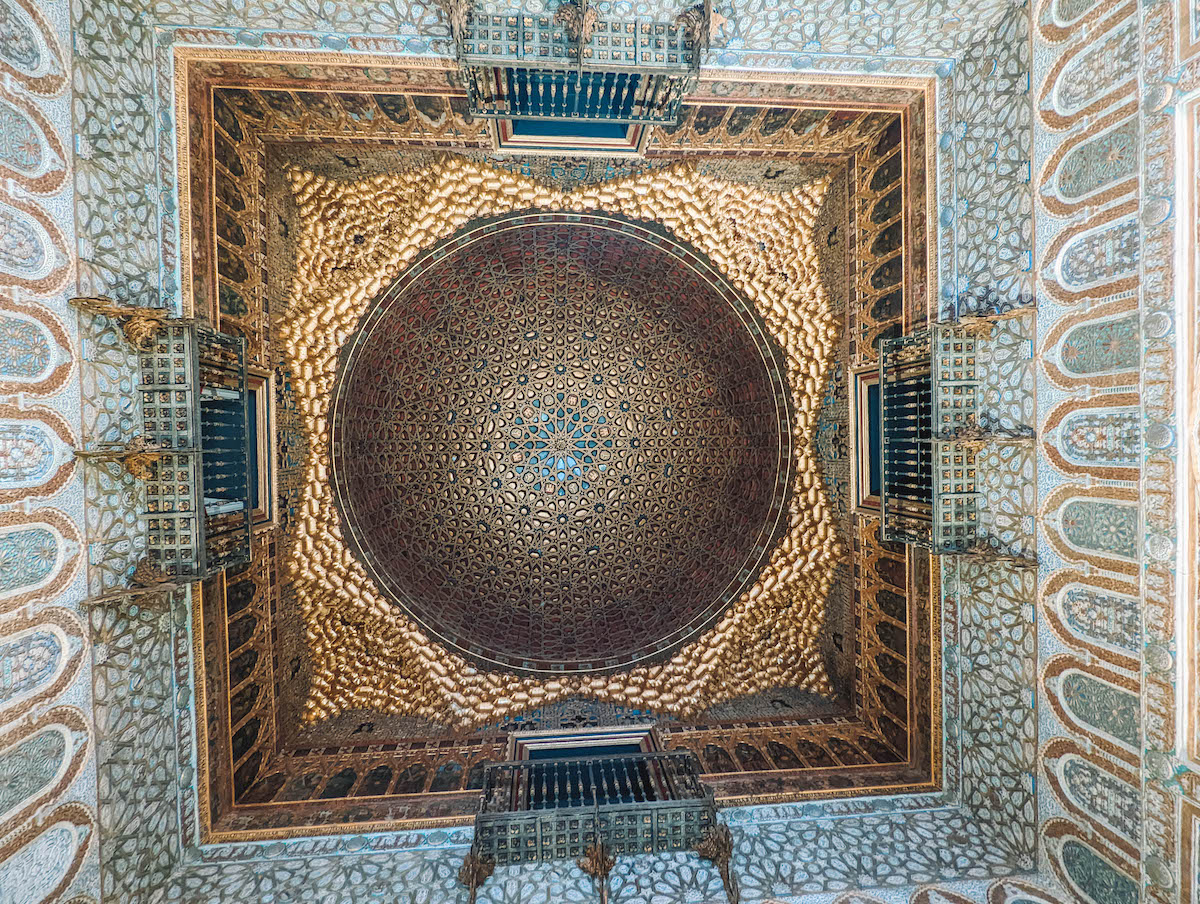
The add-on tour of the royal rooms lasts about 20 minutes and is led by an audio guide. The tour felt very rushed to me, and I don’t think it’s worth paying extra to visit the royal rooms!
However, the rest of the Alcazar is STUNNING. You can certainly use a third party provider (such as Get Your Guide) to book a guided tour, but the Alcazar audio guide was quite good and I thought it gave plenty of information for me to grasp the history of the palace complex.
There are many rooms to explore on your tour of the Alcazar, but the Hall of Ambassadors was my favorite. This stunning room was built in 1427 and served as the king’s throne room. A carved gold gilded wooden roof soars high above the throne room, making it one of the most impressive in the entire complex.
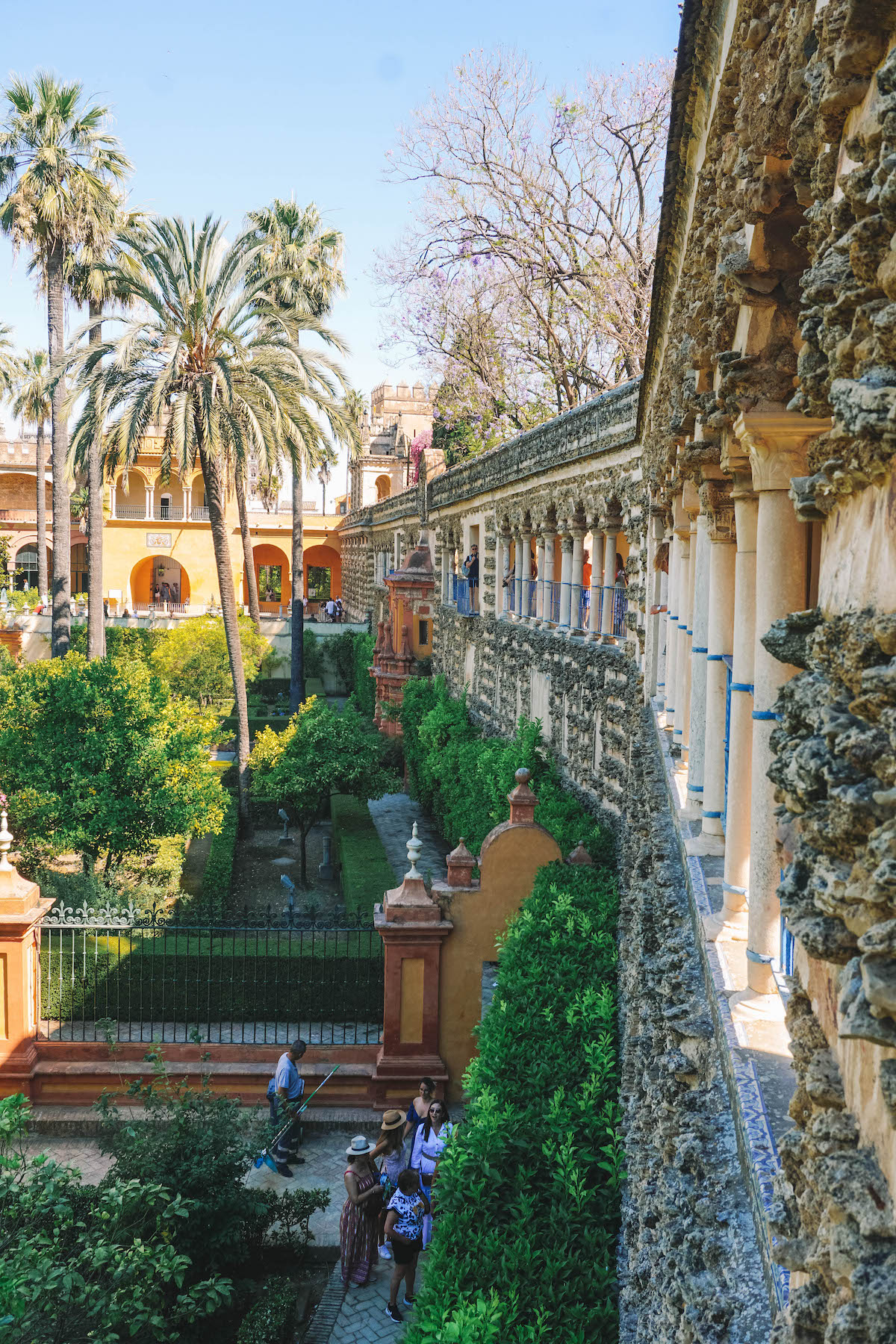
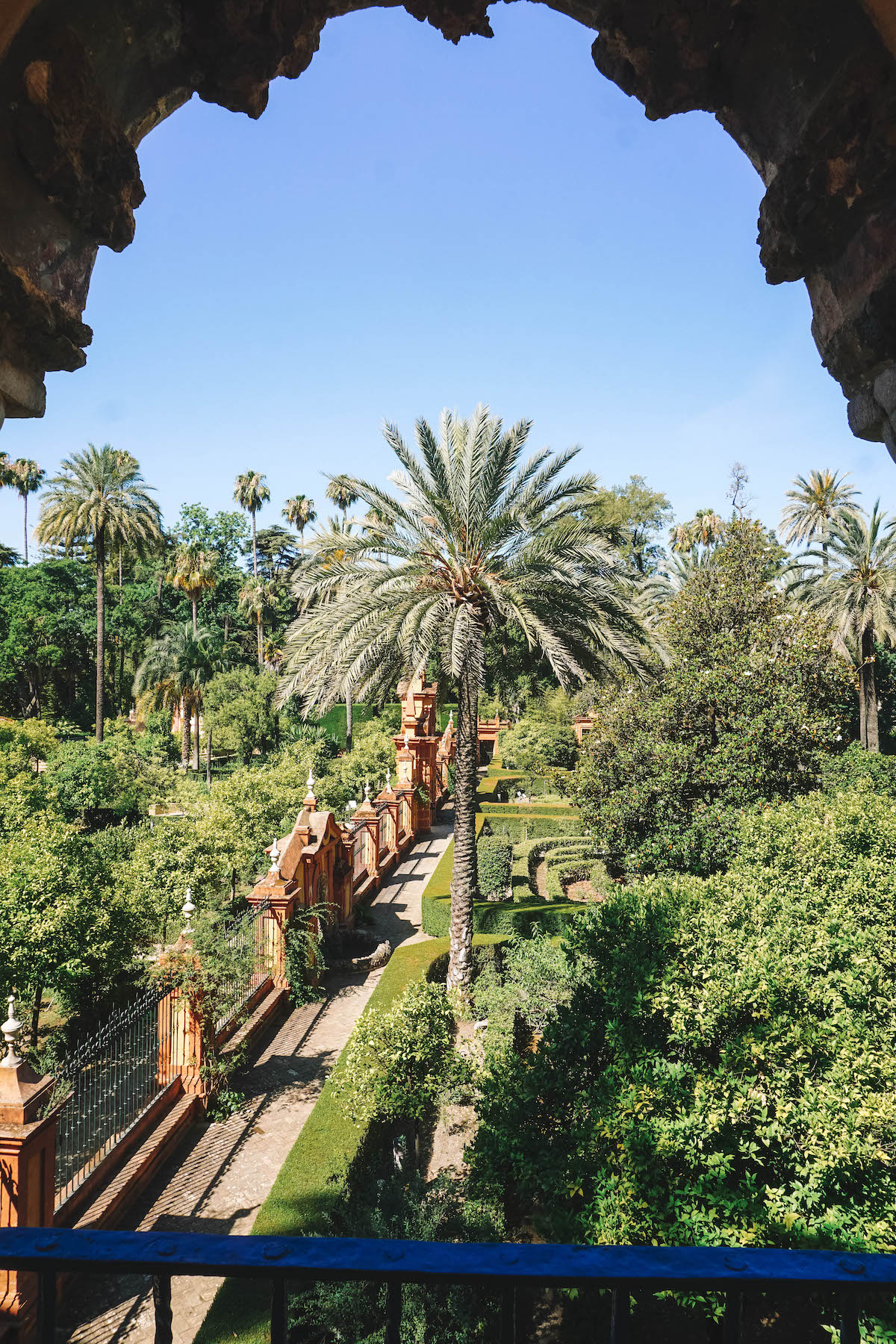
In addition to the maze of rooms, the Alcazar boasts one of the most beautiful gardens in all of Spain! The gardens of the Alcazar have been cultivated for over 1,000 years and have been shaped by Islamic, Romantic, and Renaissance influences.
Some of the highlights from the Alcazar’s gardens include:
- The Ladies Garden – with its stunning Neptune Fountain.
- The Grotto Gallery – covered in shells and built to resemble a grotto. You can ascend the gallery and walk along the top for an epic view of the gardens!
- The Maze Garden – this labyrinth was built in 1914 and is fun to get lost in.
Seville Cathedral
Time needed: 1 hour
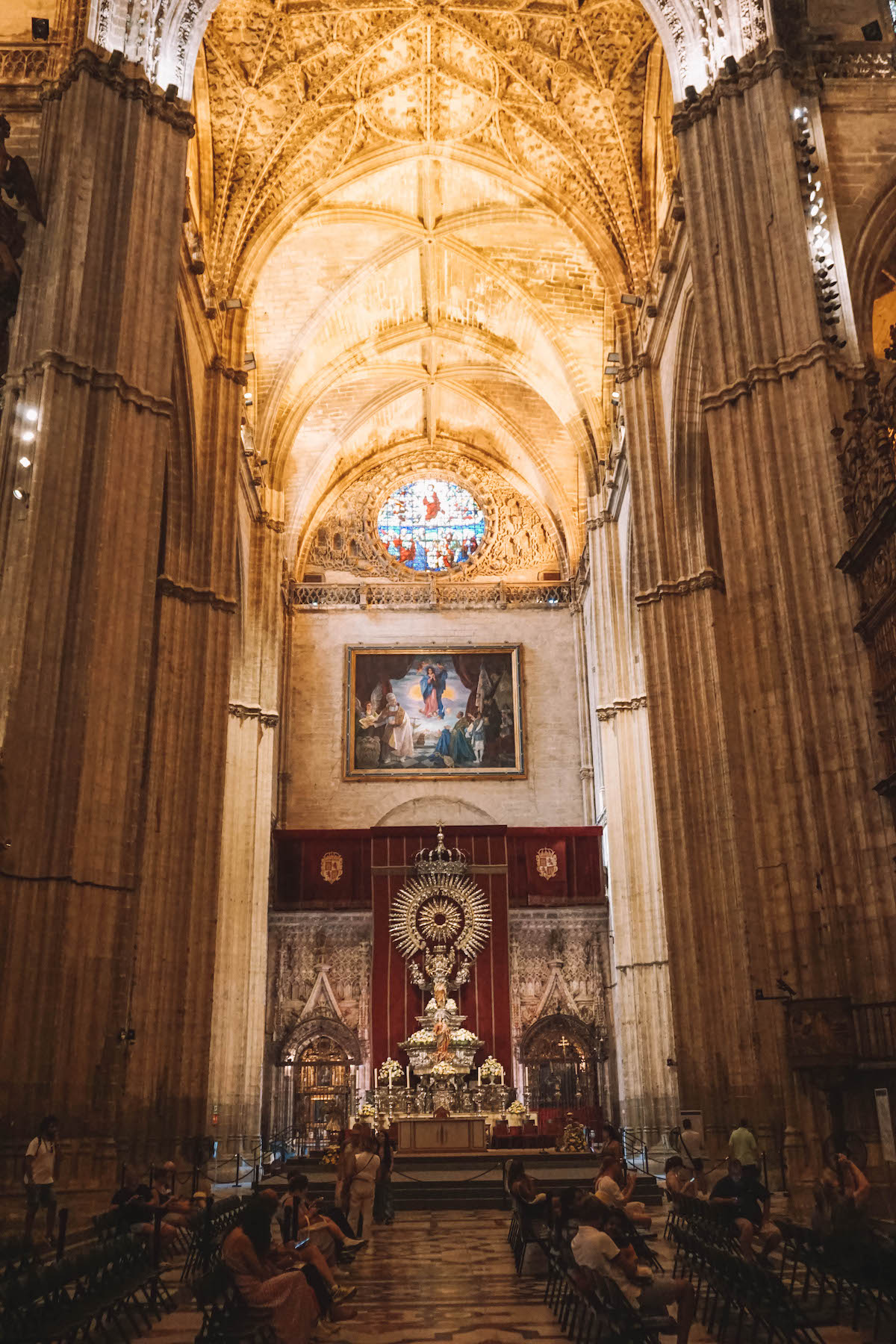
Formally known as the Cathedral of Saint Mary of the See, Seville’s cathedral is the largest Gothic cathedral in the world. And if that’s not enough to pique your interest, it’s the third largest in the world, after St. Paul’s in London and St. Peter’s in Rome. I’ll just let that sink in for a moment …
Like many of the churches in Seville, the cathedral was originally the site of a Muslim mosque (expelling the Muslims and then transforming their religious spaces into Christian churches is how the Catholic monarchy dominated previously Muslim-run cities).
The cathedral’s construction spanned 500 years, which isn’t surprising considering its size. Today the cathedral has nearly 900 gold items in its collection, some of which are on display inside. The treasury is vast and indescribably beautiful; it’s one of the best in Spain, which is just one more reason why visiting the cathedral is one of the top things to do in Seville!
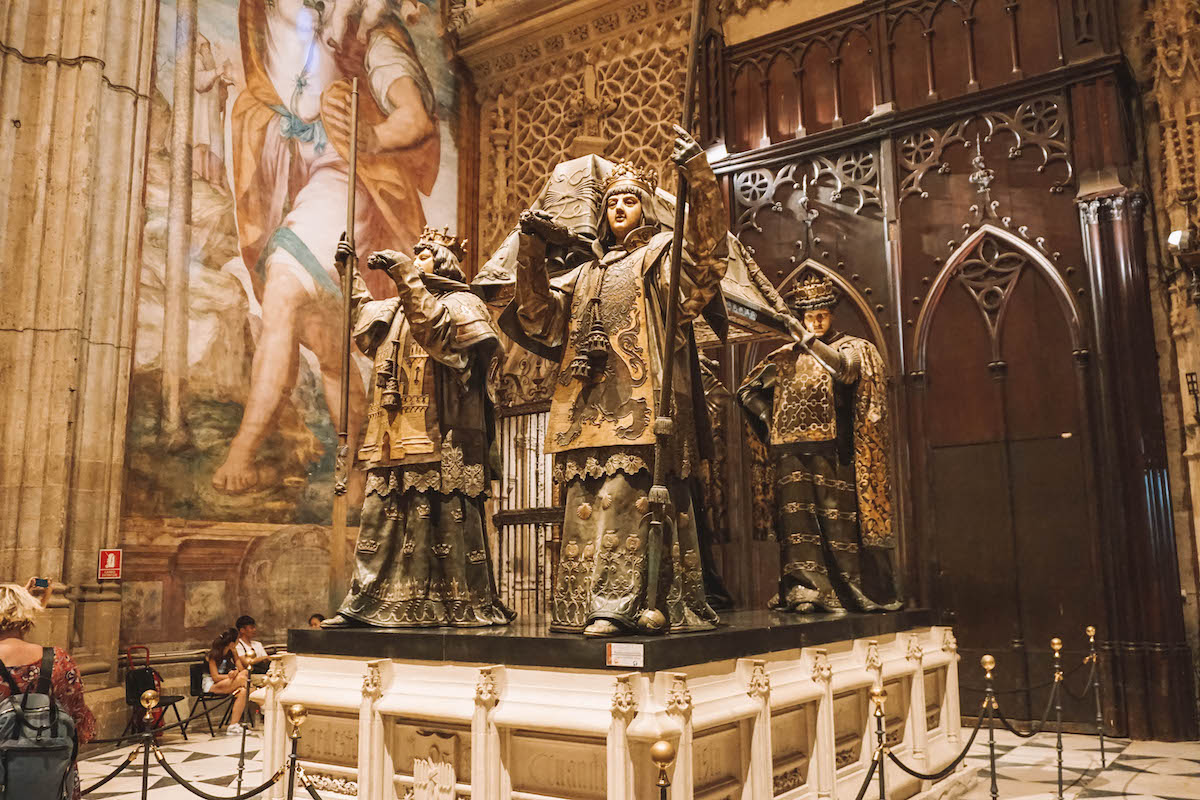
As if the cathedral of Seville wasn’t already impressive enough, it’s also the final resting place of many famous Spaniards. Perhaps the best known is Christopher Columbus — yes, the Christopher Columbus, whose famous sea voyage in 1492 resulted in the “discovery” of the Americas.
When visiting Columbus’ tomb, look for the four figures holding up his sarcophagus. These four figures are allegories meant to represent the four kingdoms of Spain during Columbus’ lifetime (Castille, Aragon, Navara, and Leon).
In addition to the tomb of Columbus, there are 80 more side chapels to admire, plus the treasury to go through.
Claire’s Tip: You can buy a combined ticket that includes admission to both the cathedral and the Church of the Divine Savior (mentioned on day 2 of this Seville itinerary). If you plan on visiting both as I suggest, buy the combo ticket at the cathedral to save some time the following day!
Giralda Tower
Time needed: 30 minutes
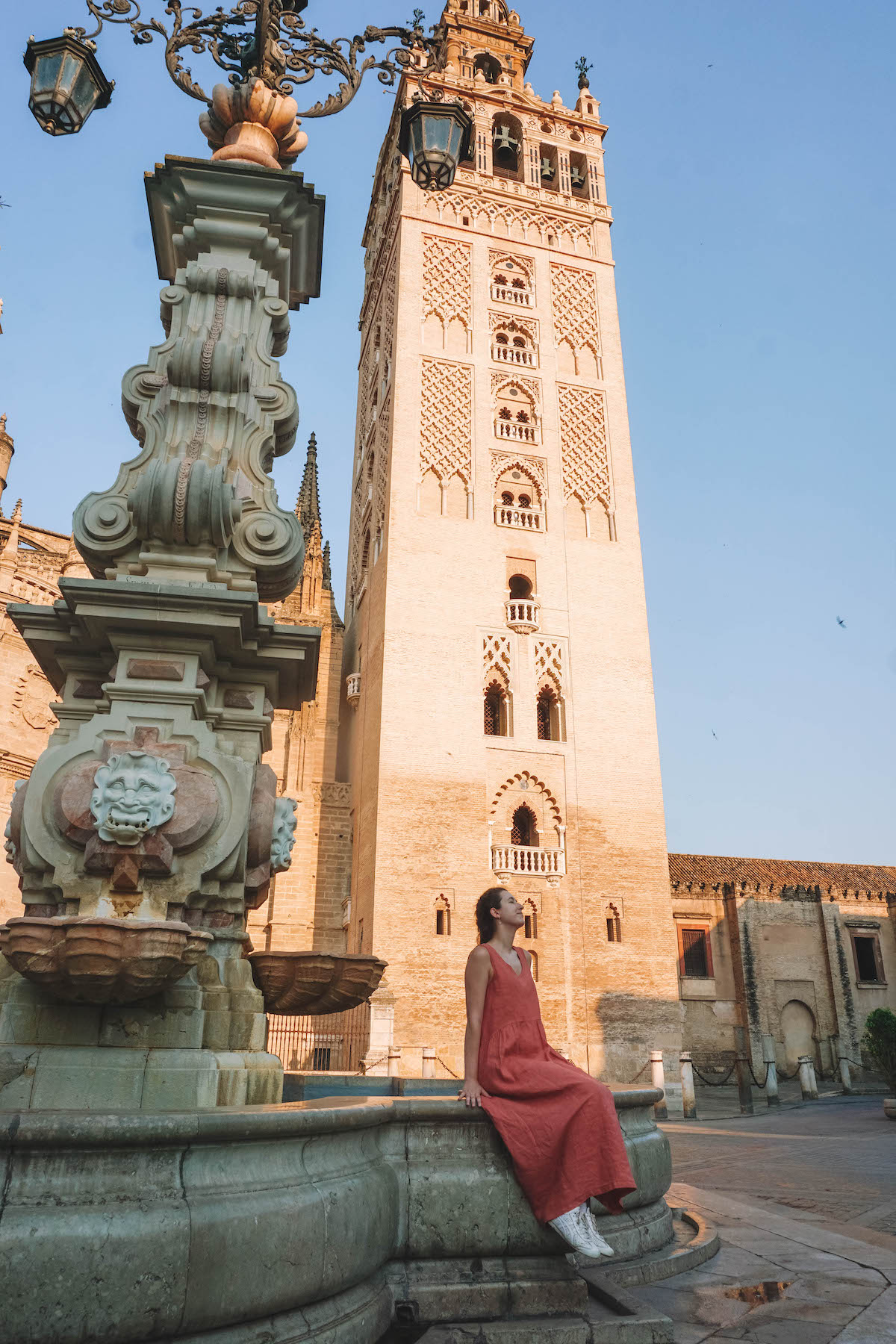
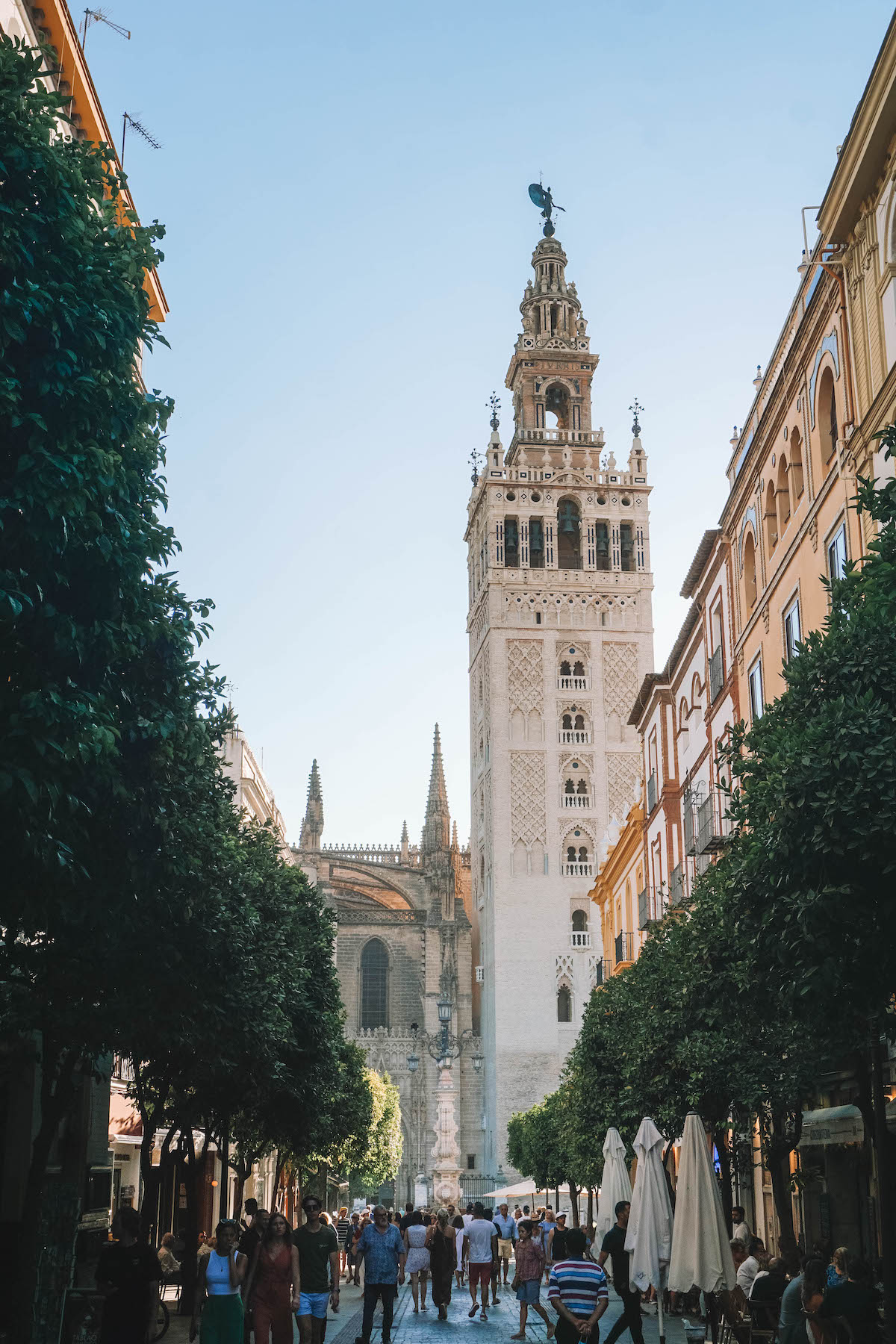
You’d think the cathedral itself would be the symbol of the city, but no! The symbol of Seville is actually the cathedral’s bell tower, called La Giralda (hee-rahl-duh).
La Giralda was originally the minaret of the mosque that stood on this site. In the 17th century, the cathedral’s bell tower was built atop the minaret.
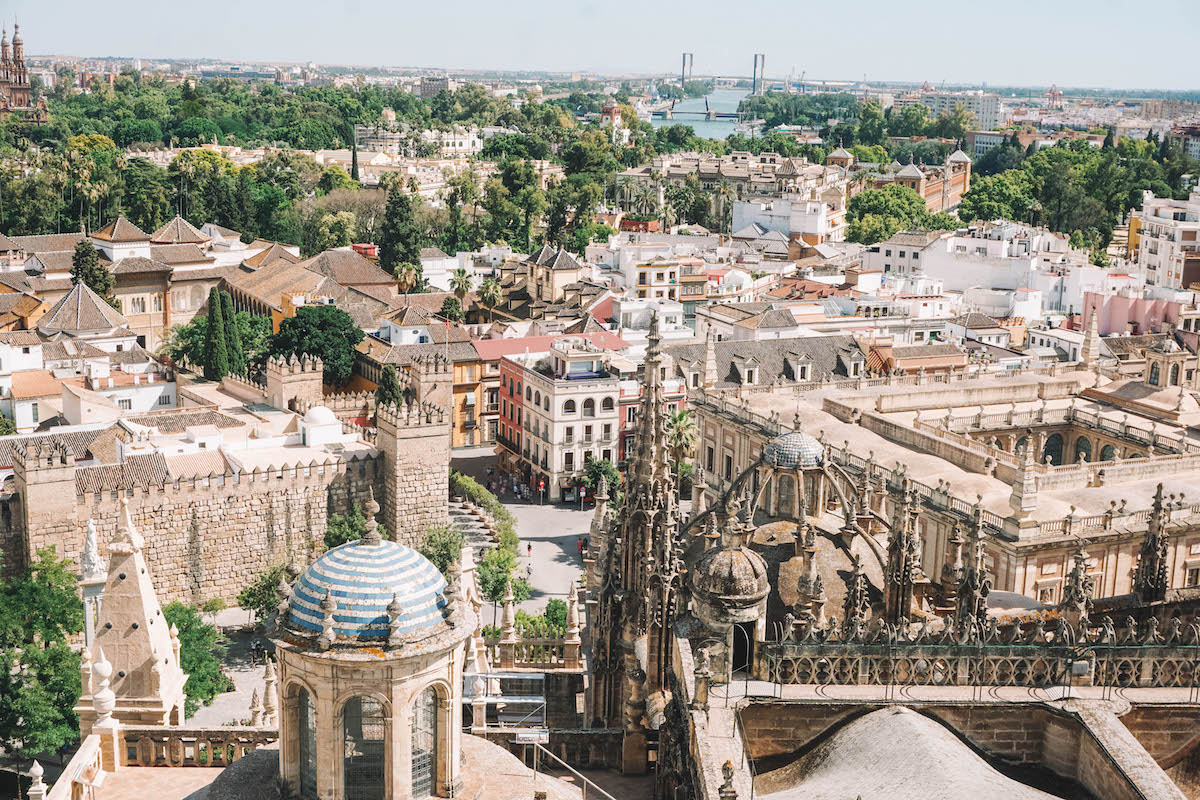
There’s an entrance to the bell tower inside the cathedral, so be sure to ascend the 97.5-meter structure for an epic view of Seville! There are no stairs to climb in La Giralda; instead there are a series of ramps (your calves will be on fire by the time you get to the top!).
The ramp system was built so that the muezzin could ride a horse to the top of the minaret to perform the call to prayer five times per day.
Book your Cathedral and La Giralda ticket here.
Barrio Santa Cruz
Time needed: 1+ hour (depends on if you stop for a drink, window shop, etc.)
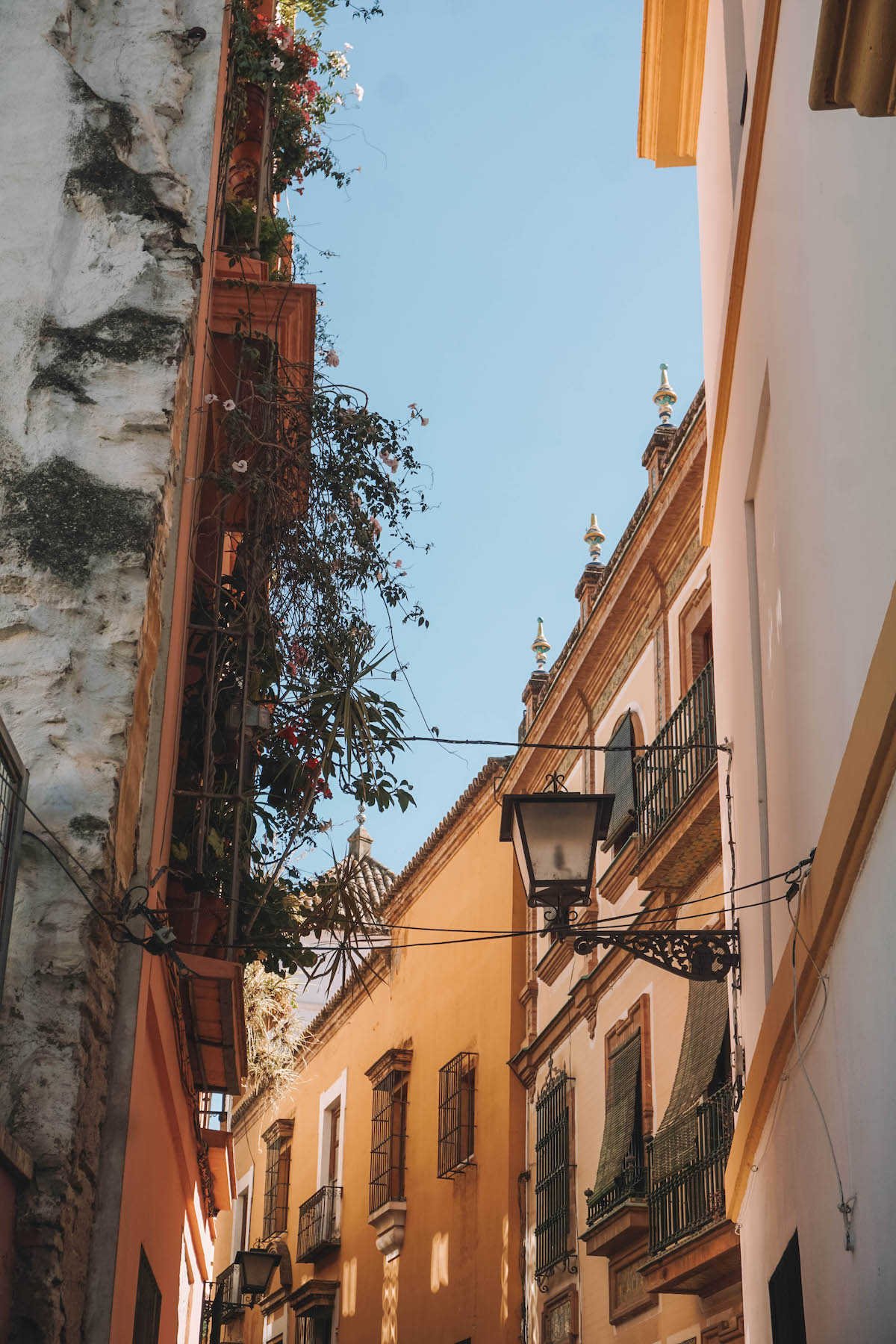
Formerly the Jewish Quarter, the Santa Cruz neighborhood can be considered Seville’s “Old Town,” for all intents and purposes. (Both the Alcazar and the Cathedral fall within its boundaries, for reference.)
Within the Santa Cruz neighborhood, you’ll find plenty of winding alleyways and pretty streets lined with shops, cafes, and restaurants. (With that said, I recommend eating your main meals elsewhere since the restaurants here are overpriced and you can find better food by going even just 10 to 15 minutes outside of the city center!)
The main street that runs through barrio Santa Cruz is the Calle Mateos Gago, which offers a gorgeous photo op of the Giralda Tower. Another street of interest is the Calle Agua, which follows the Alcazar’s walls. Calle Ximénez de Enciso was one of my favorites for window shopping! Look for the Orange Tree shop along this street; it has lots of locally-made products featuring Sevillan bitter oranges.
Parque de María Luisa
Time needed: 1 hour to 90 minutes (depends on how in depth an explorer you are)
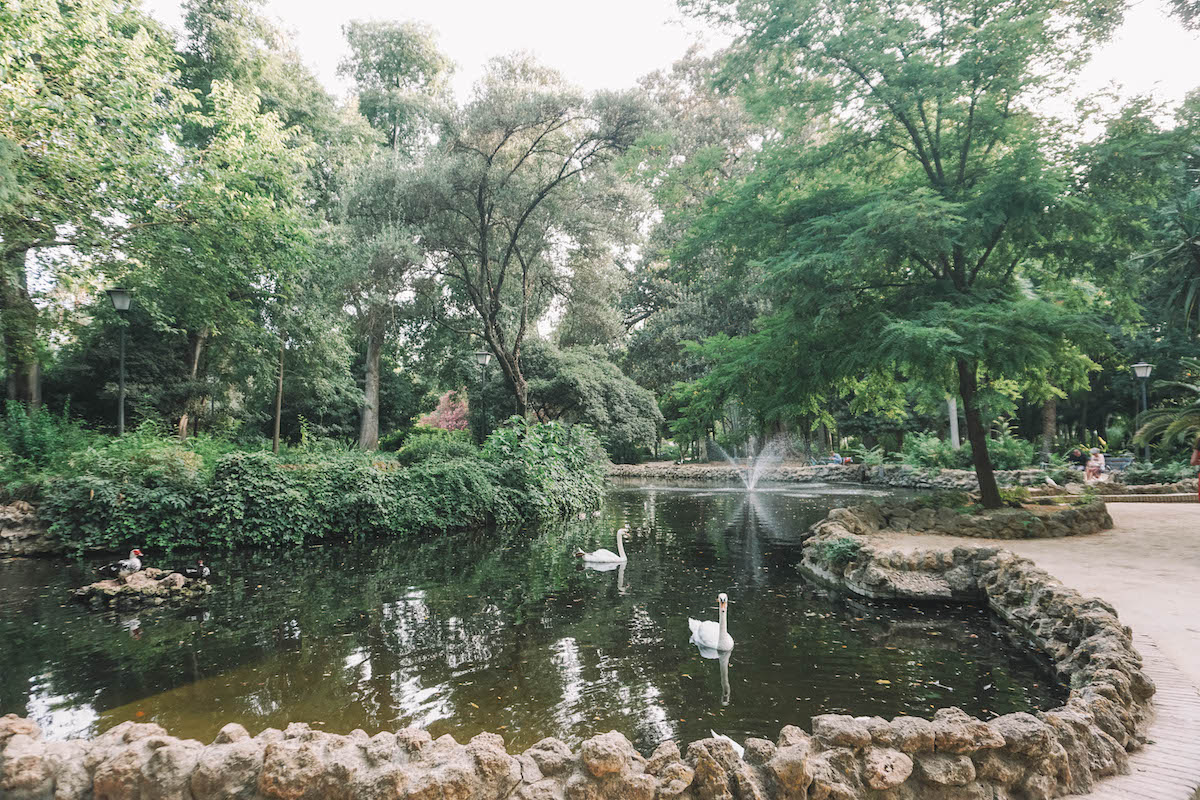
María Luisa Park is the most famous park in Seville. It was originally part of the gardens of the nearby San Telmo Palace, but the land was donated to the city of Seville in 1893 with the aim of making it a public park. The land was donated by Duchess Maria Luisa — hence the name!
The transformation of the gardens into a sprawling public park took place between 1912 and 1922. There are lots of pretty corners to discover, but my favorites were:
- Isleta de los Pájaros (Island of Ducks) — So many ducks, geese, and water fowl to watch from a shady bench!
- Monte Gurugú — A man-made hill with a pavilion at the top that offers a view of the surrounding parkland.
- Plaza de América — A remnant from the Ibero-American Exhibition of 1929. It’s now the site of the Museum of Popular Arts and Traditions as well as the archaeological museum.
Claire’s Tip: María Luisa Park is connected to the Plaza de España, so they’re great to visit together!
Plaza de España
Time needed: 1 hour (to watch the full sunset)
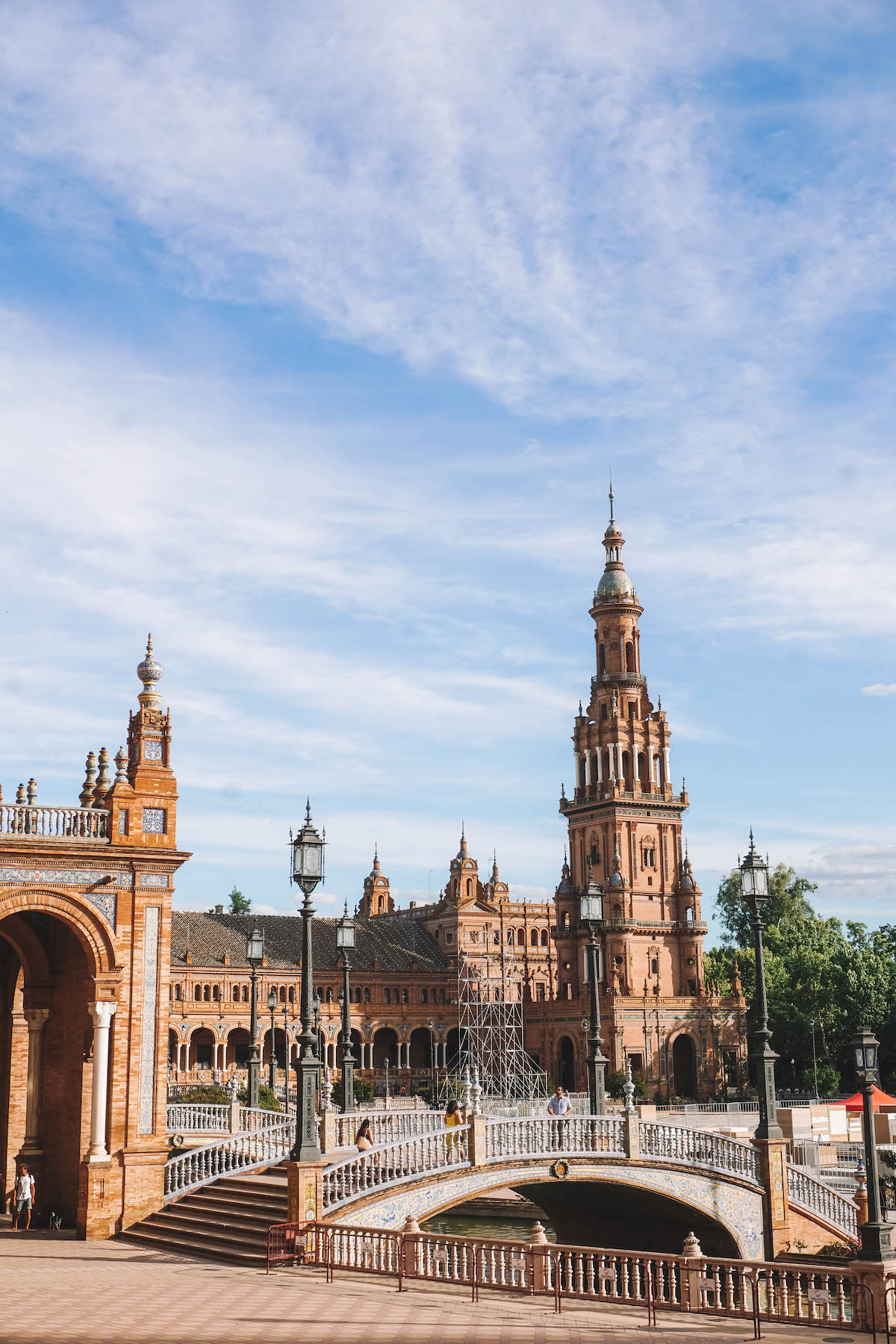
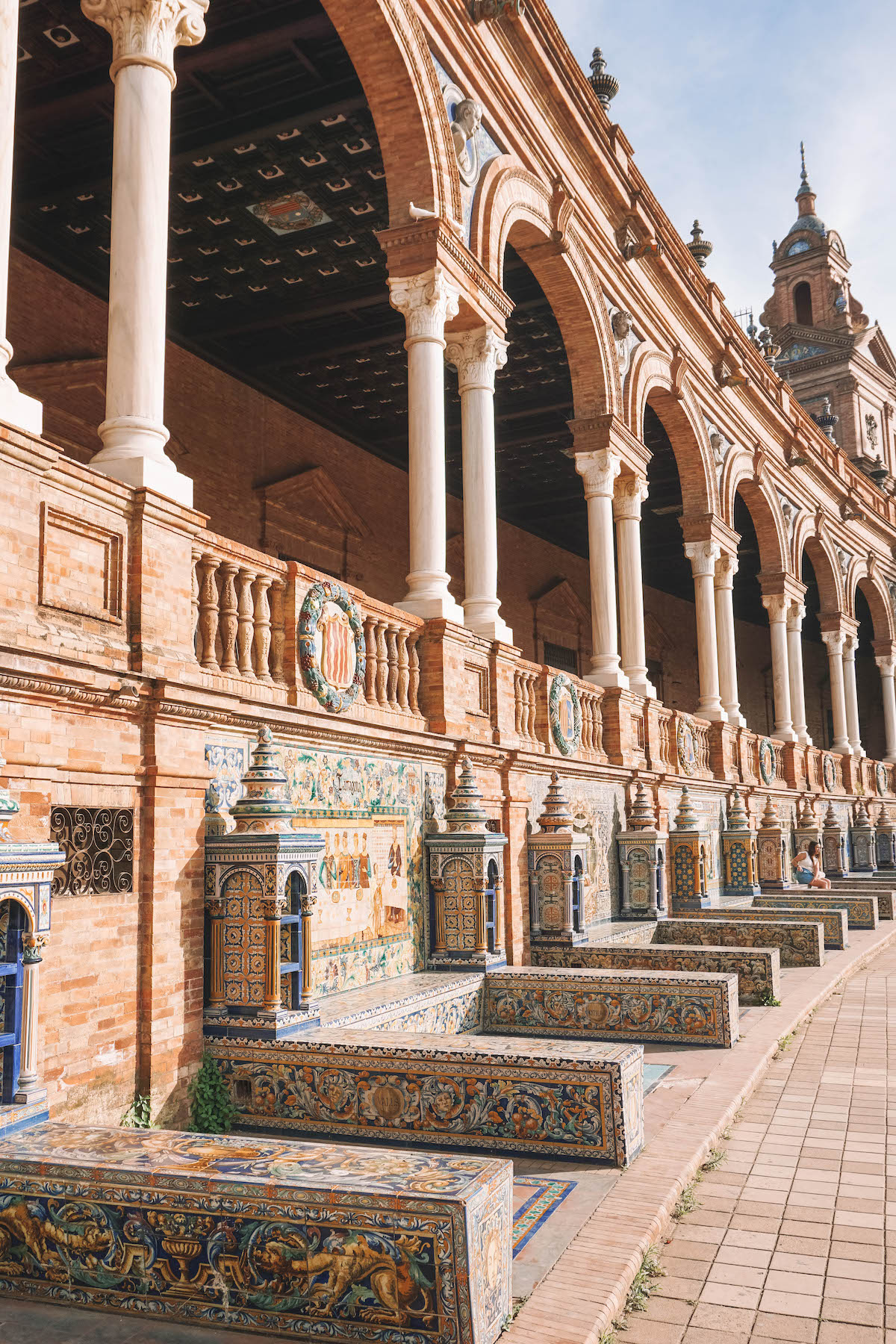
Built for the Ibero-American Exhibition of 1929, Plaza de España was designed to showcase Spain’s accomplishments in industry and architecture. It was designed by Aníbal González and built in the style of Renaissance Revival and Moorish Revival architecture.
If you have 3 days in Seville, you must visit the Plaza de España! It’s one of the most breathtaking spots in the city, and photos really don’t do it justice.
While exploring the Plaza de España, it’s impossible to miss the series of 52 benches and mosaics lining the square. The mosaics represent each of the 52 provinces of Spain, and all are made out of locally-made ceramic tiles (likely from the Triana neighborhood, which is mentioned later in this itinerary!).
Surrounding the plaza is a small but picturesque moat. You can rent a boat and paddle your way around the moat, if desired. (That would make for a great photo, I’m sure!)
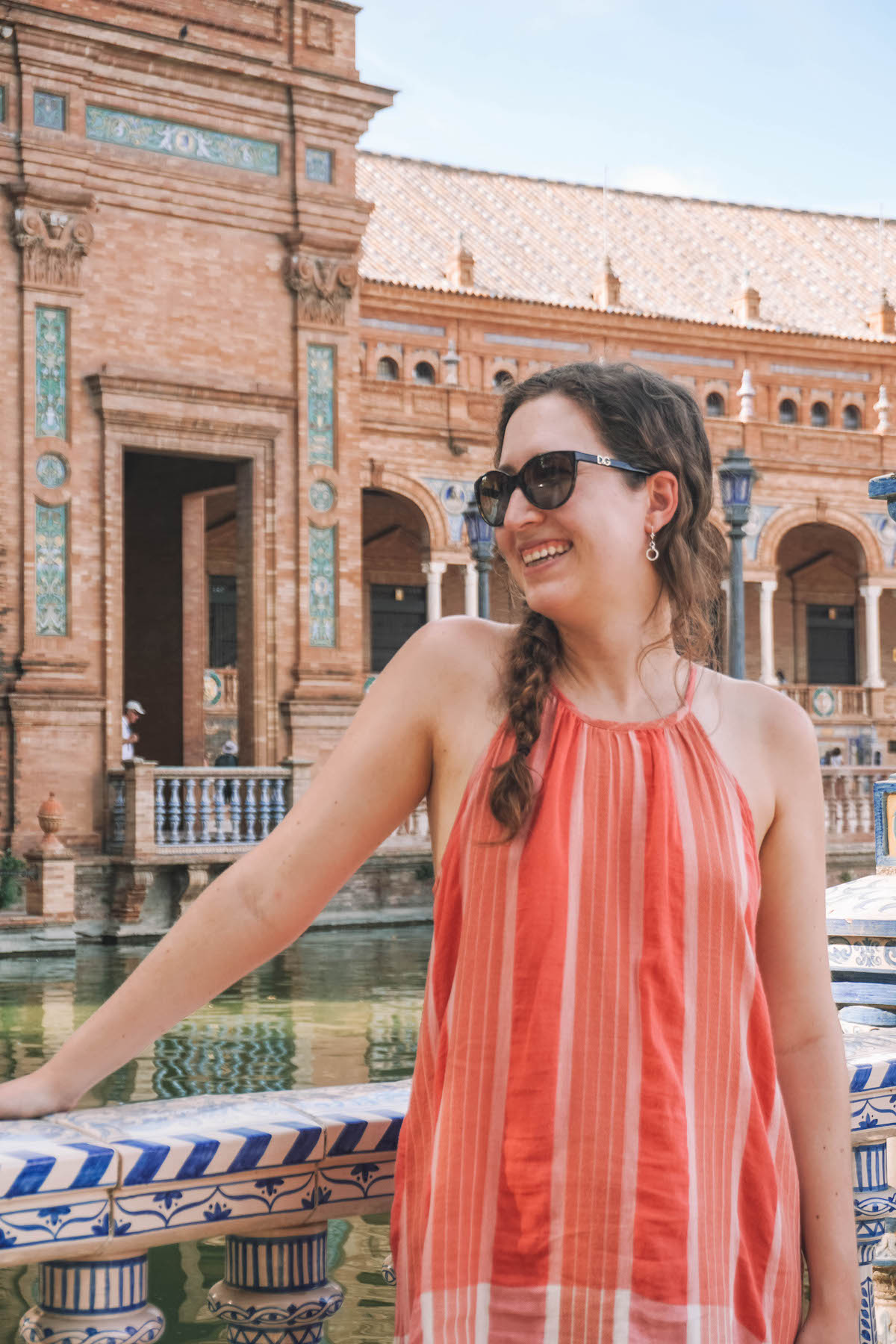
Crossing over the moat are four tile bridges, which were built to represent the four ancient kingdoms of Spain (Castile, Navarre, Aragón and León). You can also climb the stairs of the buildings surrounding the square but you may NOT enter them. They’re government buildings now!
Note that the Plaza de España becomes incredibly crowded throughout the day, so it’s best to visit at either sunrise or sunset. I visited the plaza at golden hour, and the only word I can think of to describe the atmosphere is enchanting.
Yes, there were more people around than there would have been near sunrise, but watching the sun set over the plaza was an unforgettable experience! (Hence why I recommend ending your first day in Seville at this spot.)
Claire’s Tip: Scenes from Star Wars: Attack of the Clones were filmed at the Plaza de España!
Day 2 in Seville
There’s no rest for the wicked! You’ll still get to enjoy lots of walking today, but again I grouped the Seville activities together as much as possible.
You can afford to sleep in today since most activities are so close together and none take longer than 2 hours. That also means you can window shop en route to the next attraction of the day!
Setas de Sevilla
Time needed: 45 minutes
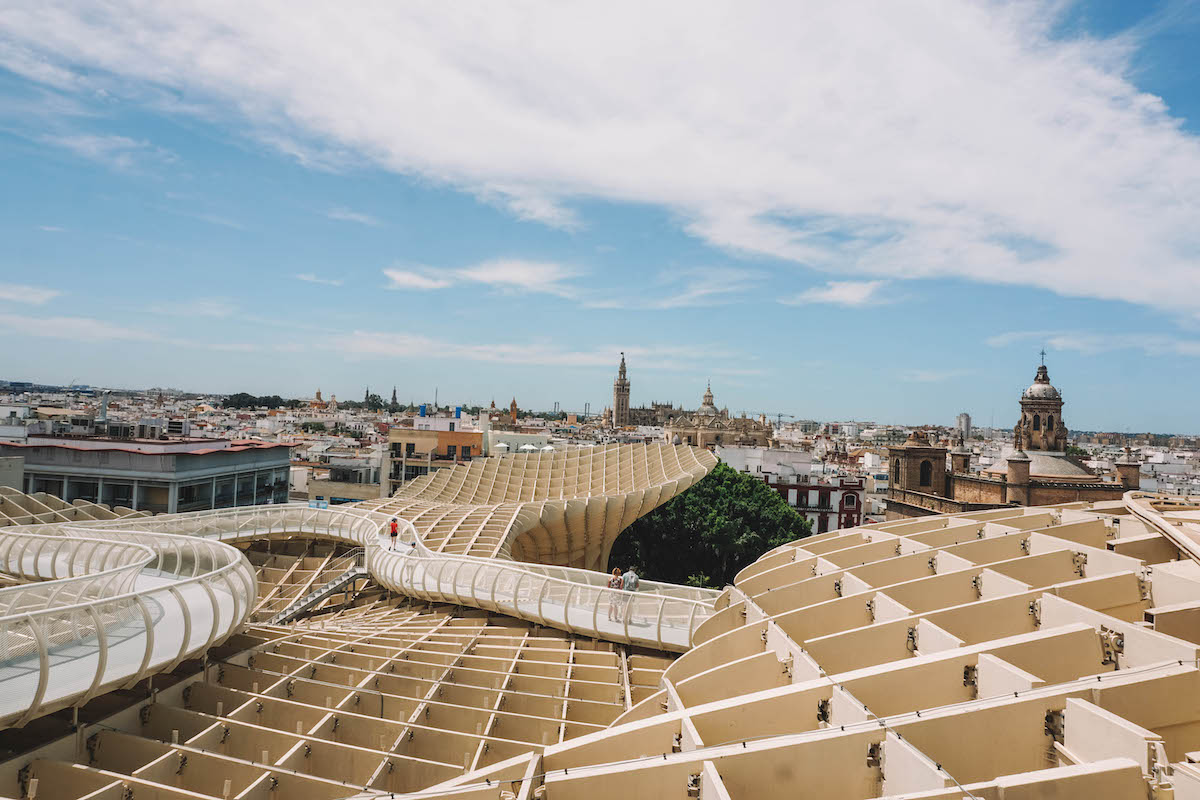
Also known as the Metropol Parasol, the Setas de Sevilla is the product of an international design competition held in 2004. The wooden structure sits on the Encarnación Square. From 1832 to 1972, the largest food market in the city could be found here. However, with the growing popularity of the grocery store, the market could no longer compete and was closed down.
For years, the area around Encarnación Square suffered. Without money coming in, the square and its surroundings fell into disrepair.
Enter: the 2004 competition. The city of Seville wanted to revive the area and allowed entries from around the globe. German architect Jürgen Mayer won the competition and created the structure you see today.
I won’t lie … I have no clue what the wooden structure is supposed to represent. Some say it looks like a series of umbrellas, others have likened it to a cluster of mushrooms. Whatever “it” is, the Setas de Sevilla is really cool!
Book your ticket for the Setas de Sevilla here.

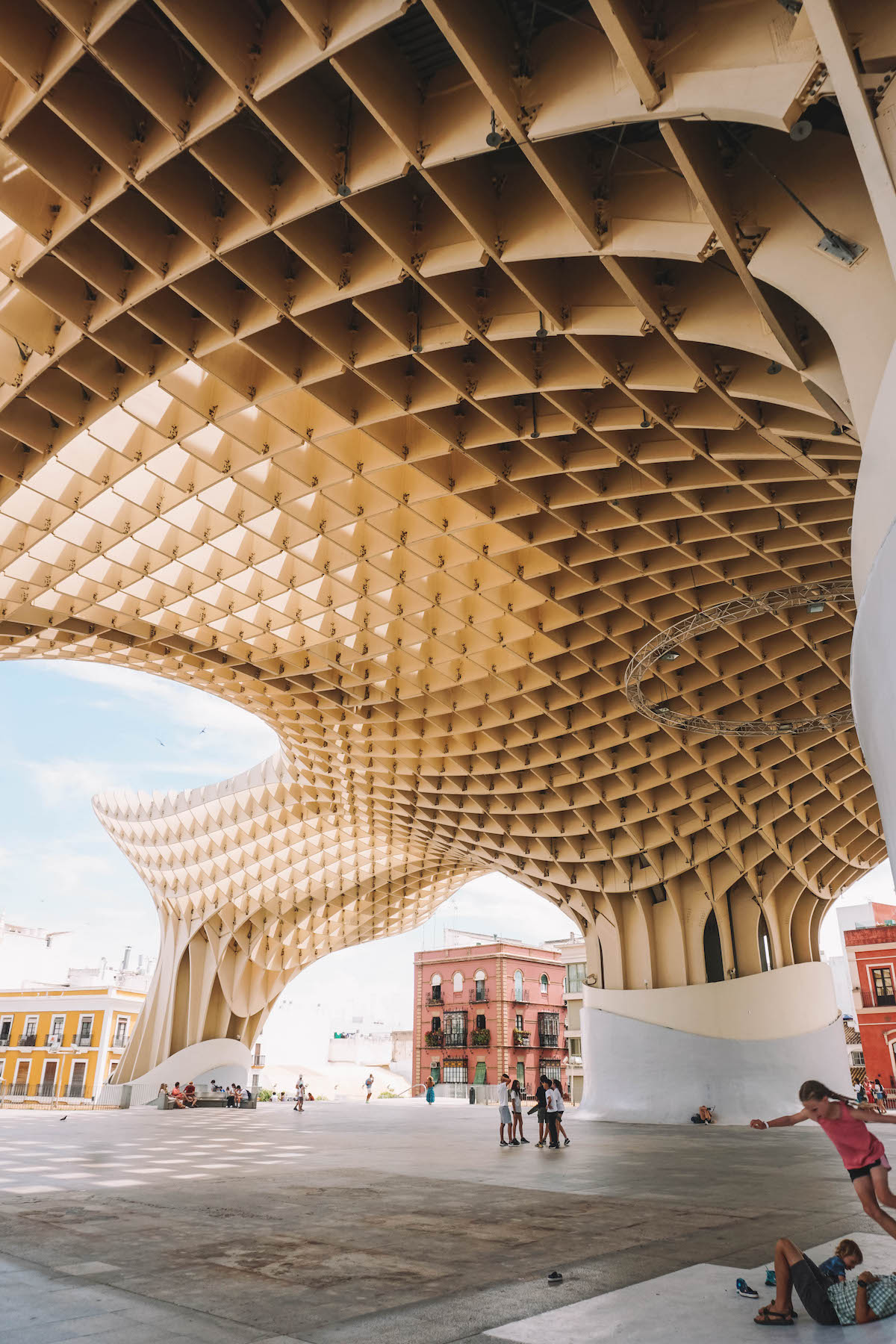
At the top of the Setas, you’ll find a viewing platform and walkway that offers you the only 360º view of the city. I almost didn’t add the Setas de Seville to this Seville 3-day itinerary because I didn’t like having to pay 10 Euros for a view. But … the view is epic! And seeing the Setas from above is even better than admiring it from the street.
In addition to the viewing platform on top, the Setas also offers lots of shade — which is crucial in the Spanish heat considering most buildings don’t have air conditioning!
After exiting the viewing platform, pay a visit to the market in the base of the structure. It’s not nearly as large as the original Encarnación Square Market, but it’s still fun to explore.
You can also pay 2 Euros to enter the small archaeological museum below the Setas. I didn’t have time to visit, but it looked interesting.
Claire’s Tip: You can also flip-flop today’s itinerary and visit the Setas at night to see the light show!
Palacio de Lebrija
Time needed: 90 minutes
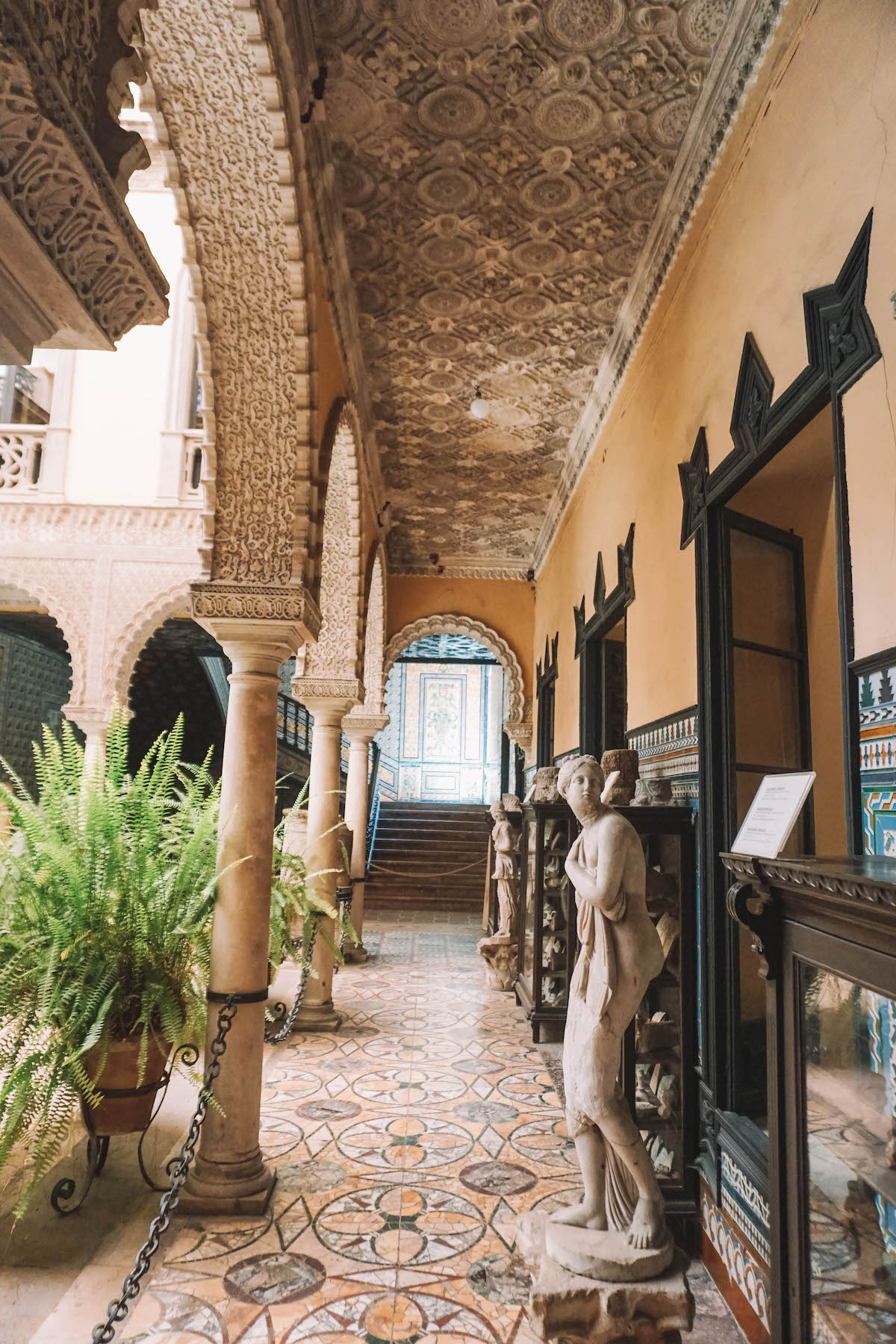
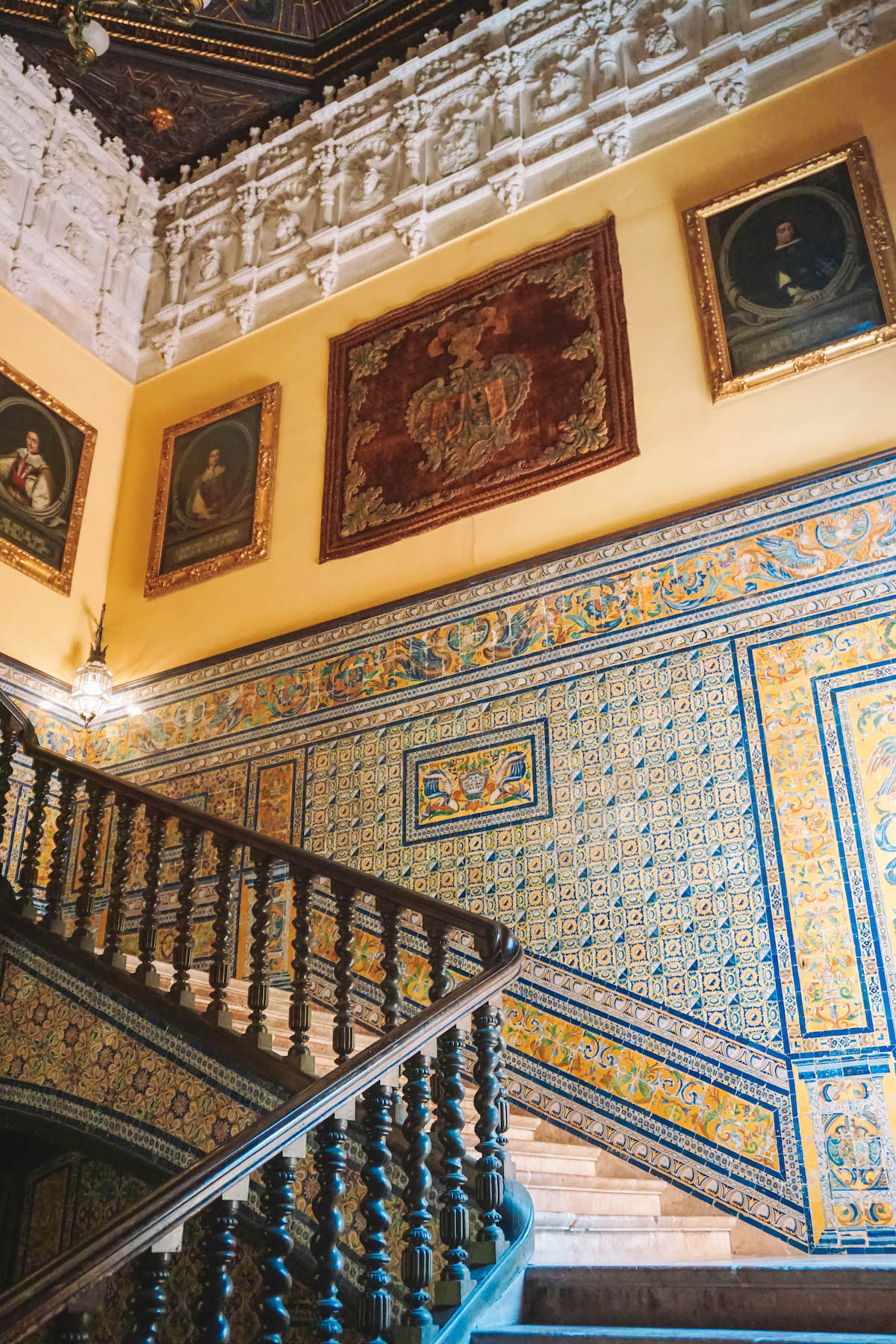
The Palacio de Lebrija (Lebrija Palace) may just be my favorite activity on this 3-day Seville itinerary!
This stunning palace was originally built in the 16th century. However, most of the palace you see today is part of the extension that was built in the 20th century. In 1920, Doña Regla Manjón Mergelina, the Countess of Lebrija, bought the home and spent 13 years redesigning it.
The ground floor was entirely redesigned and enlarged specifically to accommodate her collection of ancient Roman mosaics. The mosaics were mostly sourced from the nearby city of Italica.
Farmers working in the area began unearthing the ancient mosaics and were inclined to destroy them so they could till the land. Wanting to preserve the mosaics for posterity, the Countess bought them and installed them in her own home.
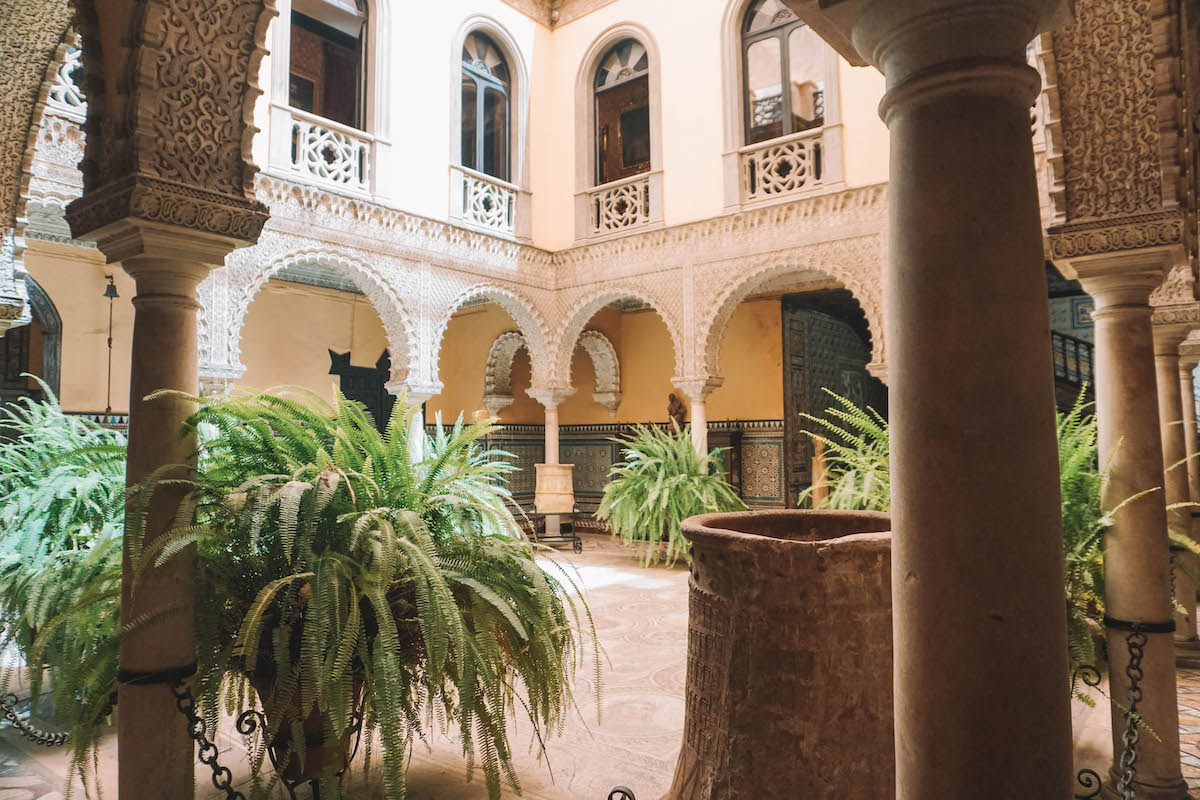
The upper floors of the palace can only be visited on a guided tour. No photos are allowed, but trust me when I say that the rooms are GORGEOUS. Since the home was so recently inhabited, the rooms all felt very lived in and very “real.” You get a good feel for the Countess’ personality and the things she valued most in life.
Interestingly, the Countess’ family still owns the home and hosts holiday dinners there! No one actively resides in the palace since it lacks many modern day amenities, so it’s open to the public most of the year.
I recommend buying tickets for the palace online ahead of time. I arrived late in the morning and was turned away until later in the afternoon because the morning tour slots had all been filled.
Claire’s Tip: Lebrija Palace is free to enter Fridays at 10am (guided tour not included).
Confitería La Campana
Time needed: 15 minutes
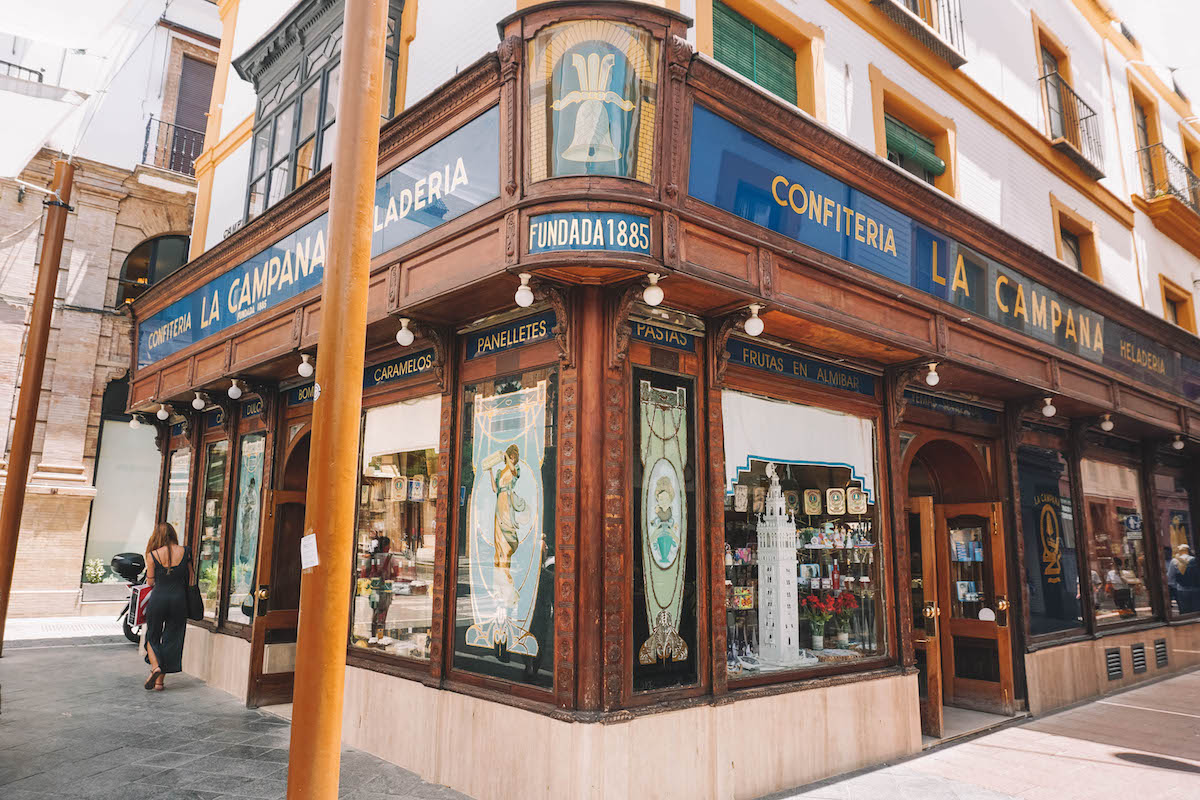
Just down the road from the Lebrija Palace is Confitería La Campana, a historic bakery that’s been in business since 1885. One step into the bakery, and you feel like you’ve traveled back in time. It’s the type of place that makes you think, “They don’t make them like this anymore!”
On one side of the bakery is a display case packed with pastries and sweets to grab and go. On the other side, you’ll find a small counter with standing room only. Order a hot chocolate or coffee, and a flaky pastry to enjoy as a late breakfast or mid-day snack.
Confitería La Campana sells traditional Spanish pastries and desserts — I tried as many as I could, but my stomach can only fit so much! I highly recommend the Tarta San Marcos; it’s a cake that dates back to the 12th century. It’s a very sweet Genoese sponge cake layered with rich egg yolk cream and sprinkled with sugar before being scorched with a blowtorch.
With that being said, I liked everything I tried here so order whatever catches your eye!
Iglesia Colegial del Divino Salvador
Time needed: 1 hour
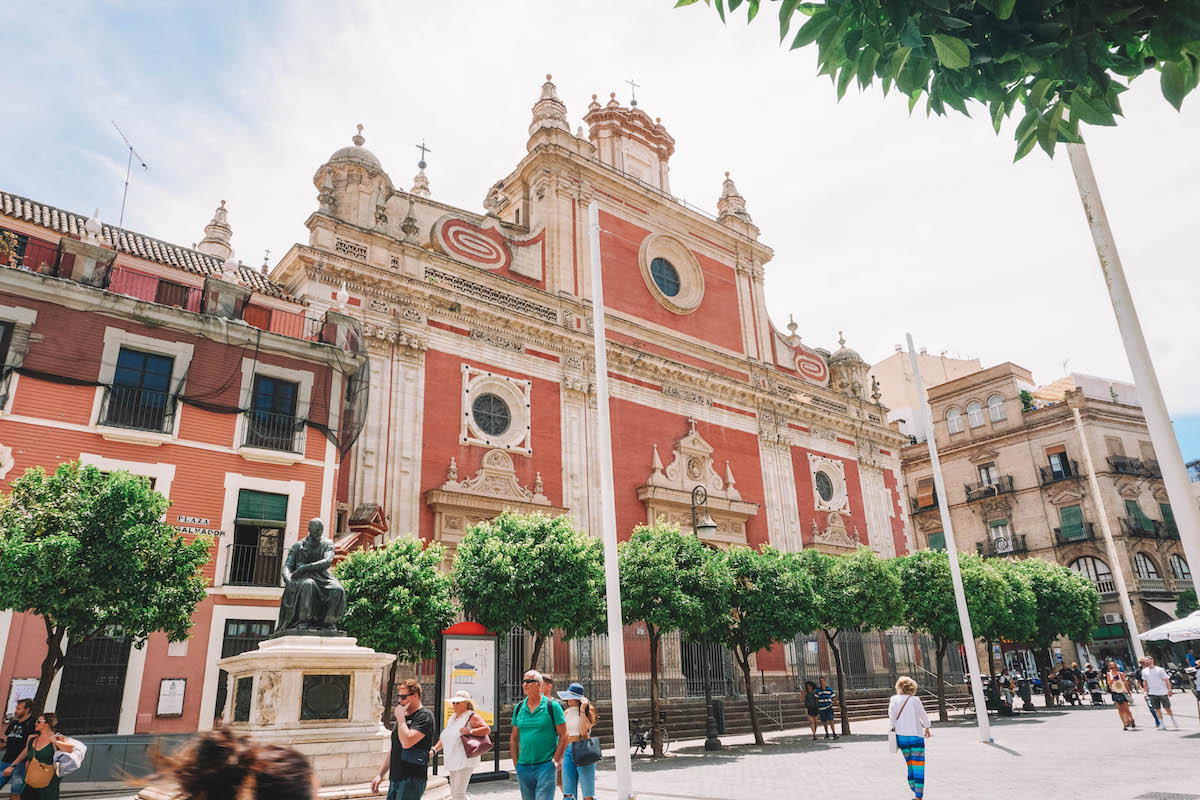
Built between 1674 and 1712, the Collegiate Church of the Divine Savior is a stunning Baroque church that was built on the site of what was the Great Mosque in Muslim Seville. It’s the largest church in the city after the Cathedral, and there’s so much to look at inside.
Remember that the combination ticket gets you into this church and the cathedral. You should have bought the combo ticket on day 1 when you were at the cathedral.
Seville Museum of Fine Arts
Time needed: 2 hours
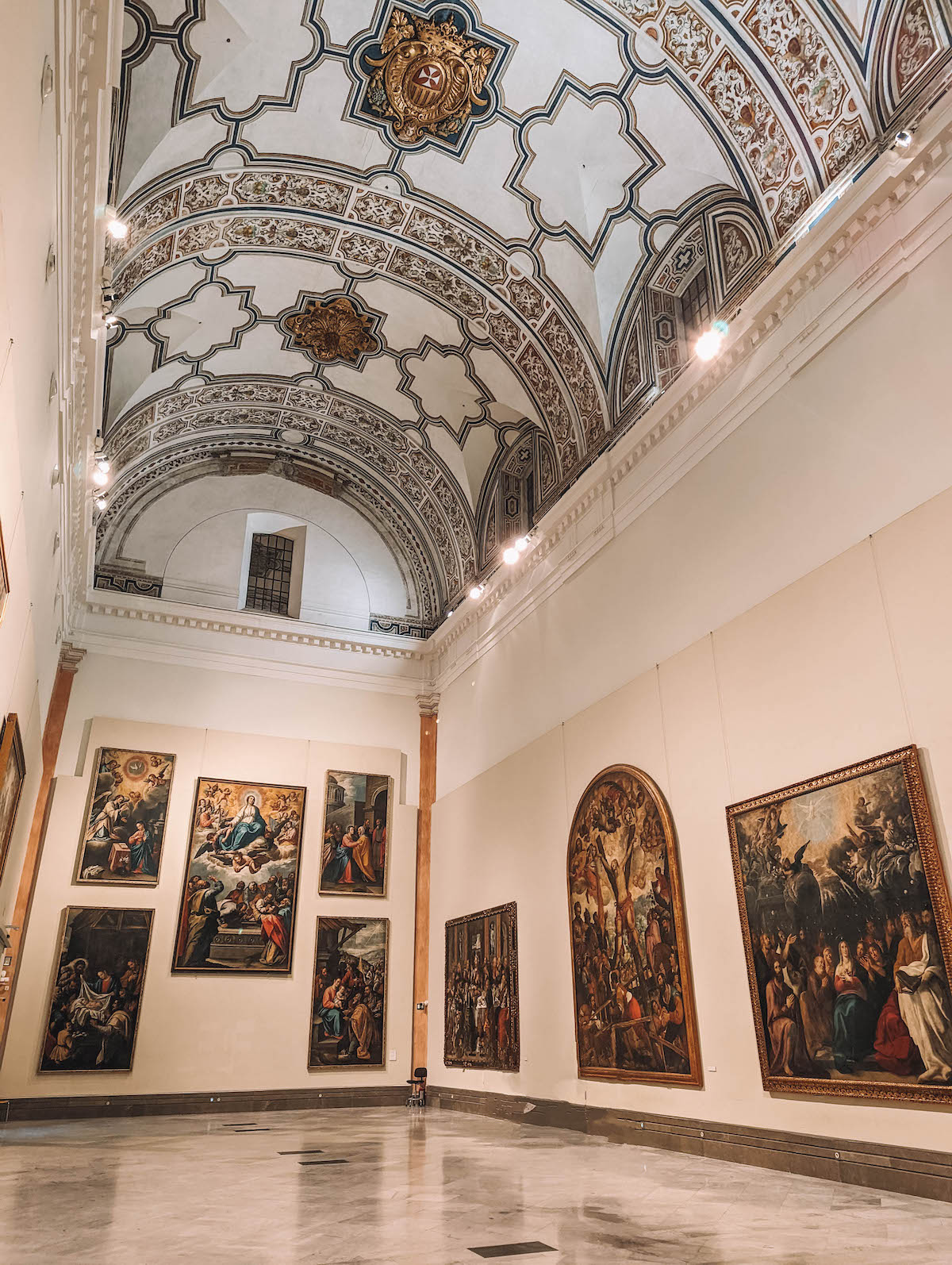
The Museo de Bellas Artes de Sevilla is an absolute bargain! It costs just 1.50 Euros to enter (free if you’re an EU resident like me!) and there are rooms upon rooms of beautiful artwork dating back to the Middle Ages.
The museum is housed in the La Merced convent. It was built in the Mudejar style, so in addition to the typical Christian iconography there are also elegant horseshoe arches throughout the building.
Certain rooms in the building were never fully converted into museum spaces, and that’s where you get the best sense of how the convent used to look. The former chapel is particularly beautiful, and the soaring ceilings allow huge works of art to be displayed!
I recommend ending your second day in Seville at this museum since it’s very peaceful, and it’s also a great (air conditioned!) place to come in the late afternoon when it’s really hot.
Day 3 in Seville
Your third and final day in Seville features — you guessed it! — lots more walking. However, I intentionally left free time in the late afternoon and evening for you to fill however you see fit. If you haven’t yet meandered aimlessly around the city, today’s the day to do it!
Walking Tour of the Triana Neighborhood
Time needed: 2 hours 30 minutes
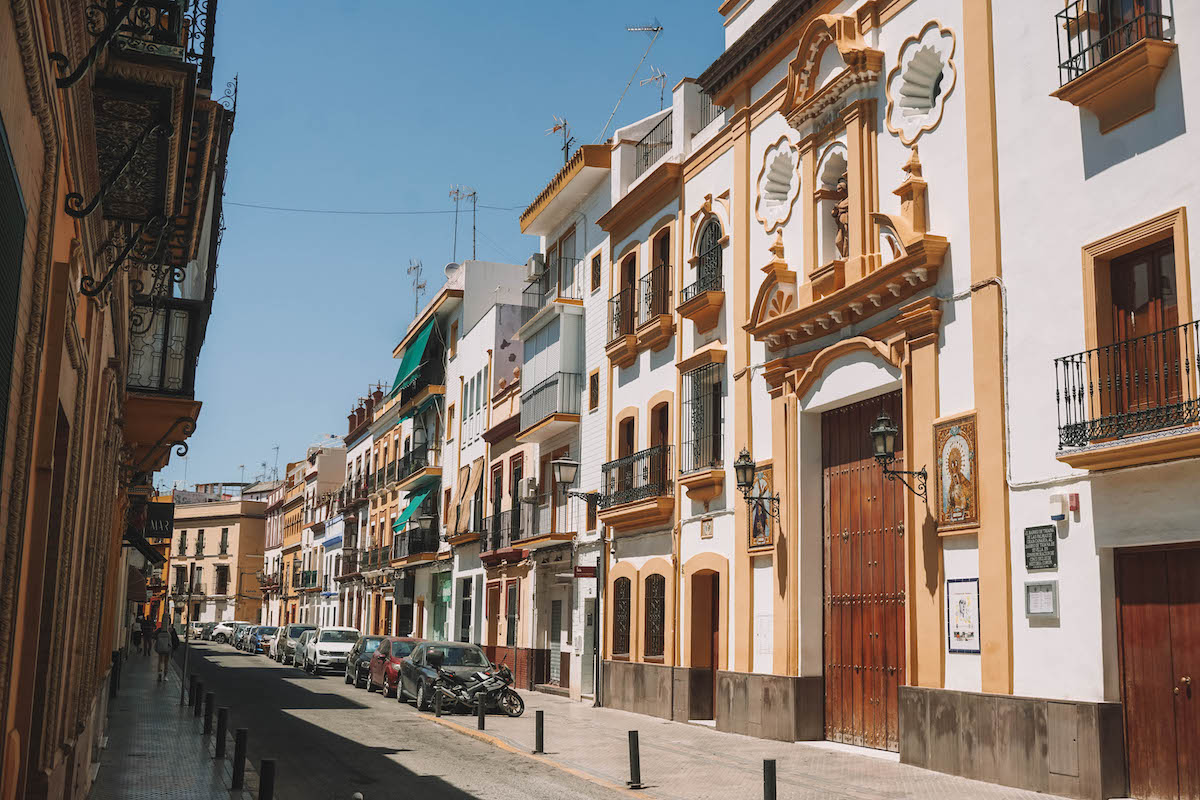
Now that you’ve spent two days exploring the city center, it’s time to see where the “real” people of Seville live! The Triana neighborhood has long been one of Seville’s residential neighborhoods. Because of that, visiting the neighborhood on your own without a guide can be, well, boring.
However, Triana is historically one of the most important neighborhoods in the city. Among other things, it’s best known for being the center for the production of ceramics in Seville!
I highly recommend signing up for the free Sandemans walking tour of Triana. The walking tour still covers over 2,000 years of Seville’s history – just from a different angle! It’s a nice changeup from the more traditional walking tours that take you past only the main tourist attractions. The Sandemans tour tells the story of Seville from the working man’s perspective.
As a bonus, the restaurants in Triana are cheaper than those in the city center so be sure to ask your tour guide for recommendations on where to eat later on!
Mercado de Triana
Time needed: 1+ hour (if eating)
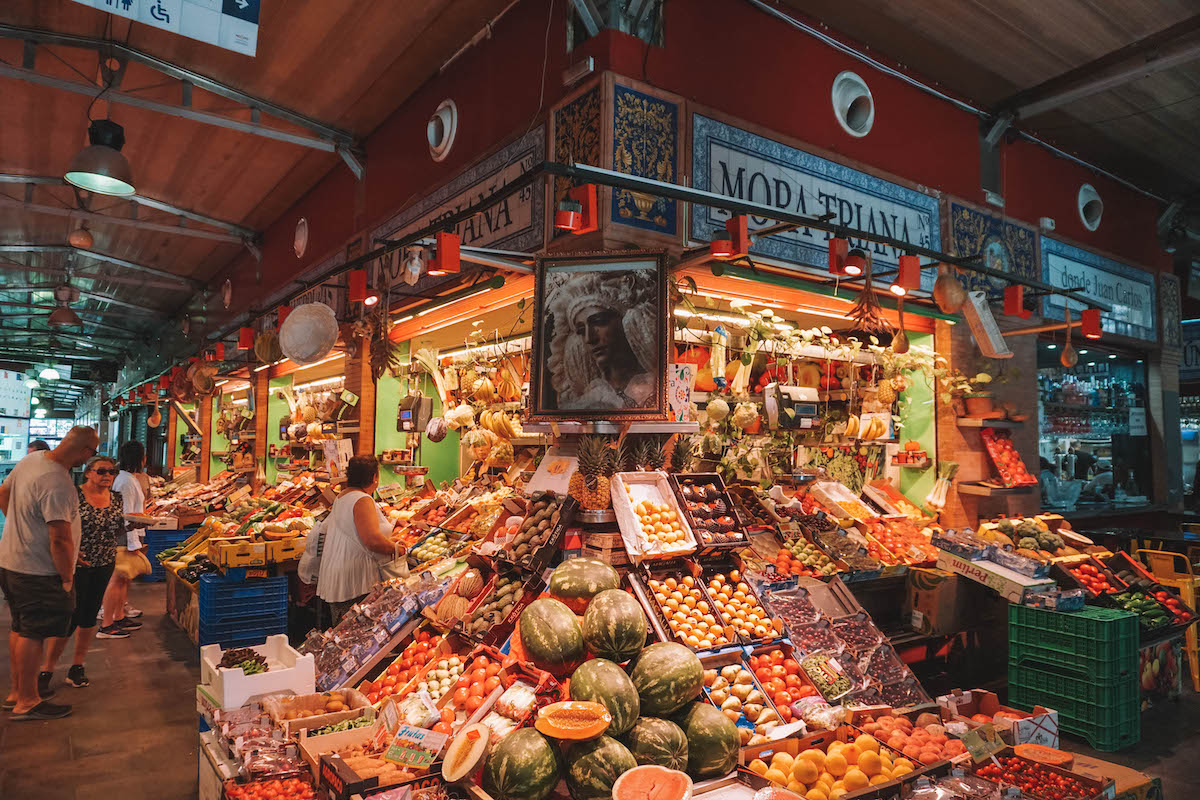
If you take the walking tour I’ve recommended above, you’ll wind up near the Mercado de Triana afterwards. The Mercado is a covered market selling fresh produce, meat, and seafood, and it also has small restaurants inside.
This is a great place to come for a late lunch. Refuel for the afternoon on local tapas and wine (or Tinto de Verano!) before heading out again.
Just note that the Mercado can get crowded, so you may have to wait to snag a table at one of the restaurants.
Archivo de Indias
Time needed: 45 minutes to 1 hour
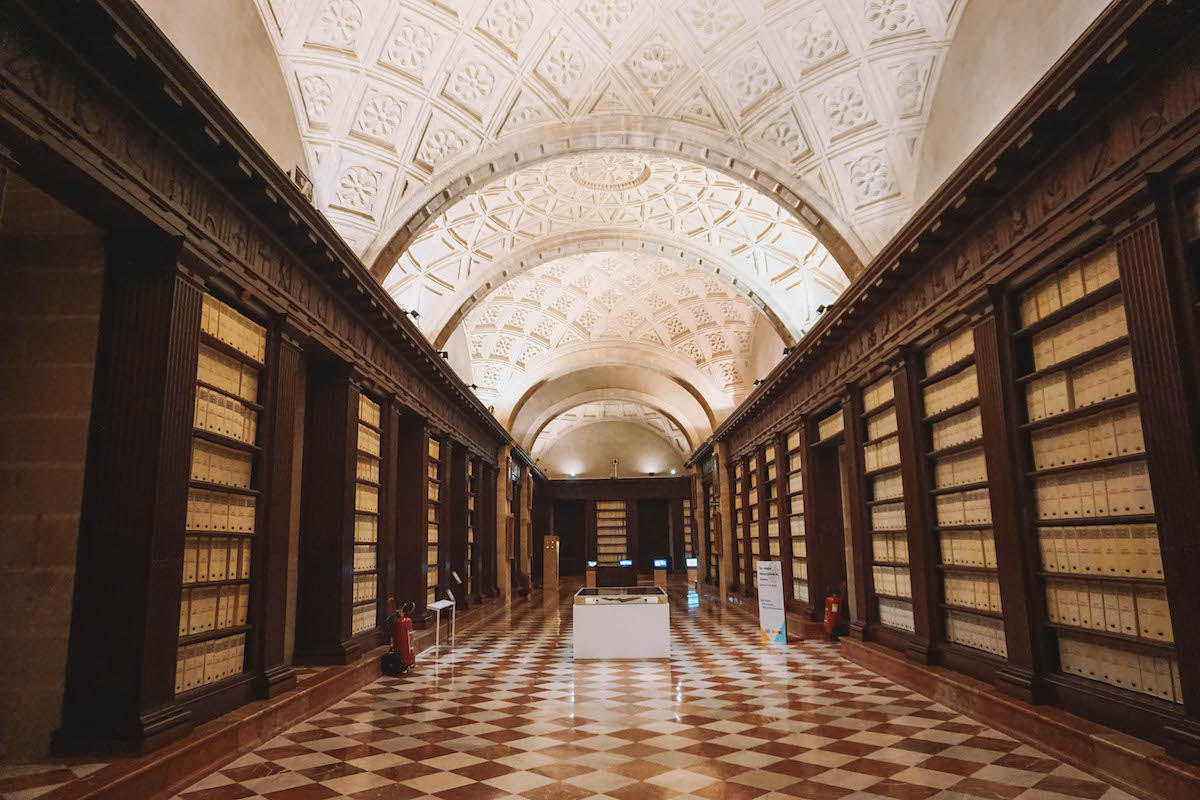
Your third afternoon in Seville will see you retracing your steps a bit. After eating lunch in Triana, you’ll want to head to the Archivo de Indias (Archives of the Indies). Although this lovely 16th century building is located right next to the cathedral, it’s an underrated spot that not many tourists bother visiting.
The Archivo de Indias houses 80 MILLION (!!) pages and maps – all original! — relating to Spain’s massive empire from the 18th to 19th centuries. The archives are still primarily used for research purposes, but visitors have free access to the small collection of rotating exhibitions.
The exhibitions offer a unique look into Spain’s history and are an absolute treasure trove of documents. (Seeing Christopher Columbus’ signature on an original document was so surreal!)
Casa de Pilatos
Time needed: 90 minutes
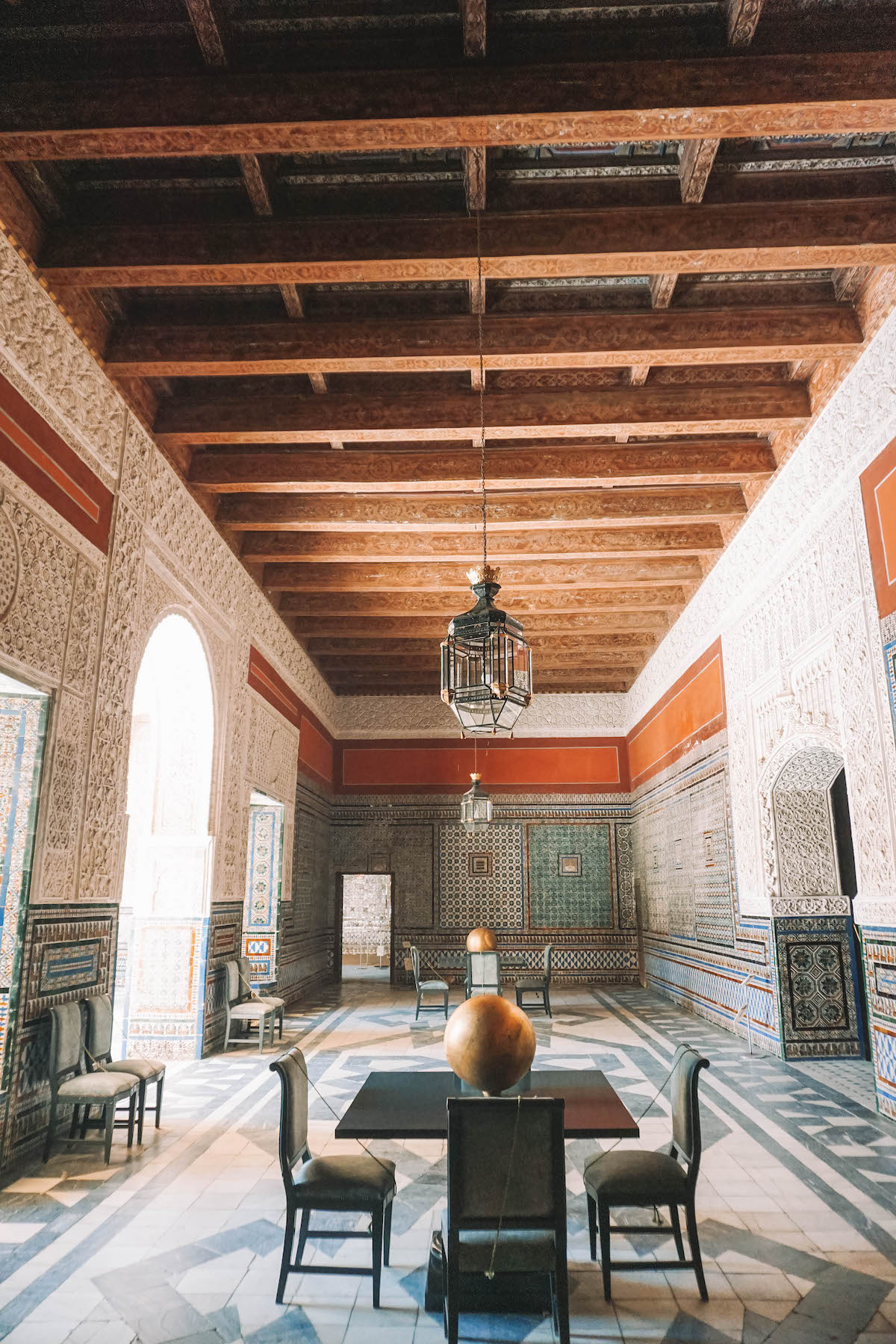
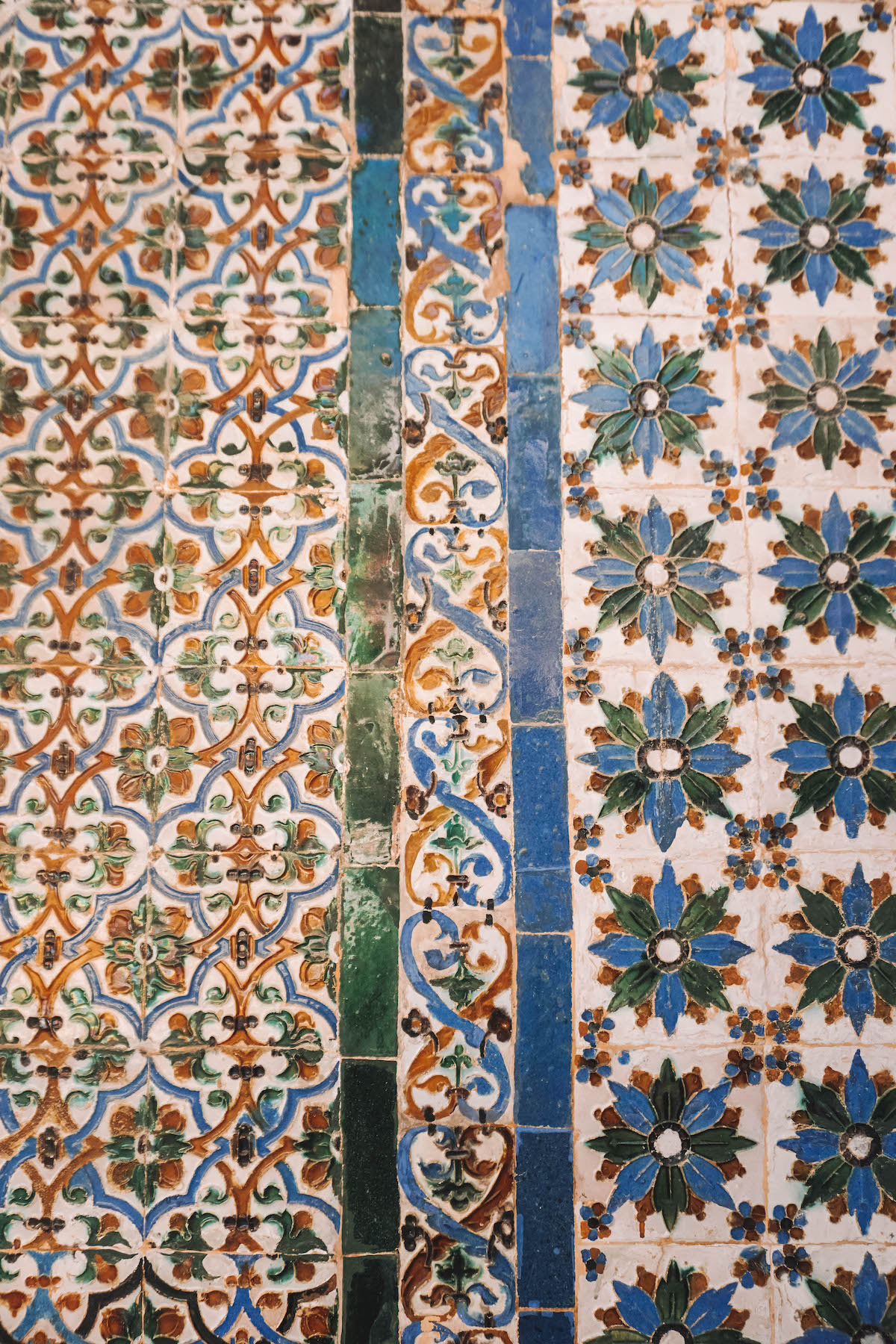
Construction on Pilates’ House began in 1493 for Pedro Enríquez de Quiñones. He died before the home was finished, and it wasn’t until his grandson owned the property that the building works were completed. The palace was constructed in the Spanish Mudejar and Italian Renaissance styles and is one of the prettiest homes I’ve had the pleasure of touring.
The palace has a central courtyard that’s surrounded by rooms, all of which had their doors and windows thrown open to let what little breeze there was pass through the home. The rooms are sparsely furnished, so don’t expect a lavish setup.
However, the furniture (or lack thereof) is irrelevant compared to the gorgeous azulejo (Spanish glazed tiles) covering the walls and floors. Each wall is decorated with tiles of differing patterns, colors, and shapes. The effect is absolutely mesmerizing!
Book your ticket to Casa de Pilatos here.
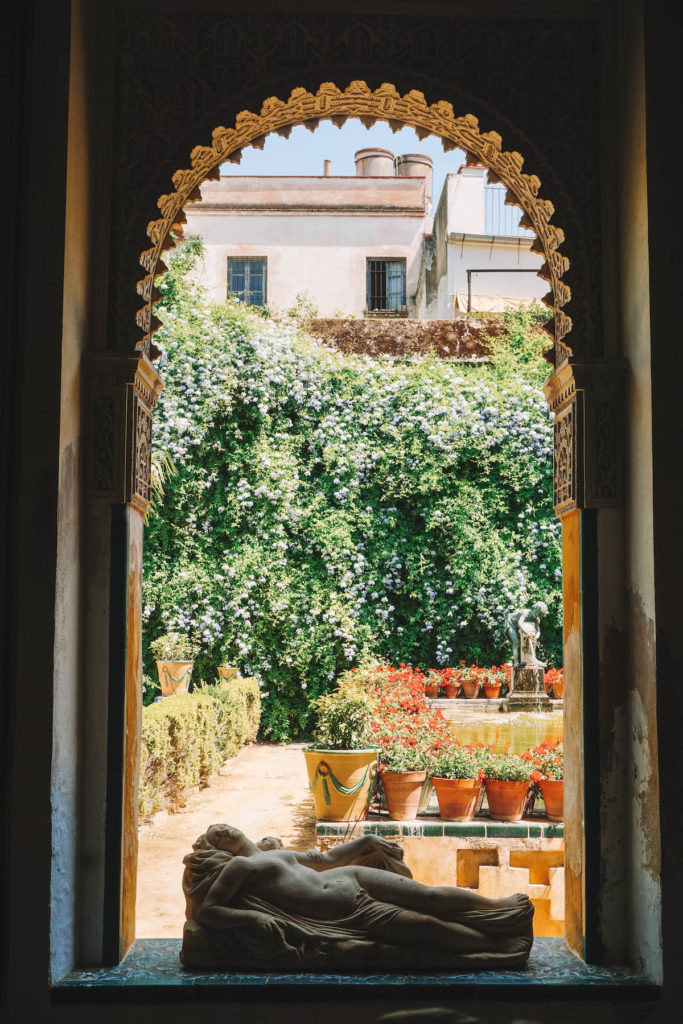
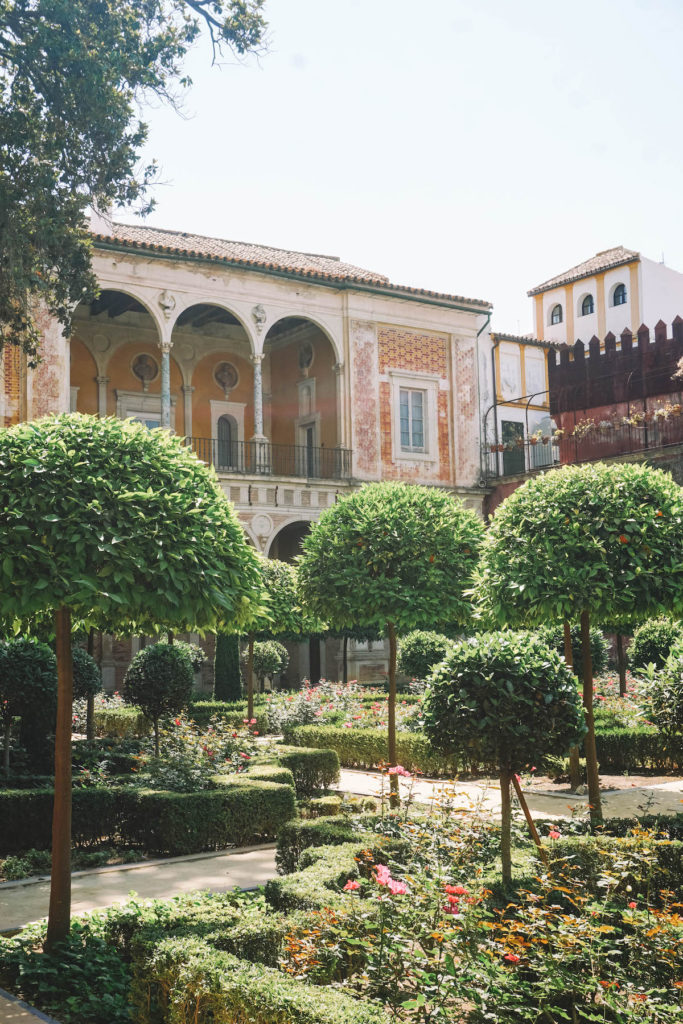
The palace also boasts lush patios (inner courtyards), which you’re free to walk through. The courtyards feel like a slice of paradise within Seville!
Claire’s Tip: The palace got the name “Pilate’s House” because the original owner established a “Stations of the Cross” route in Seville, with the palace chapel as the starting point. The first Station commemorated Jesus’ condemnation before Pilate. Thus, the name “Casa de Pilatos” is how the palace is remembered.
Explore on Foot!
Time needed: Up to you!
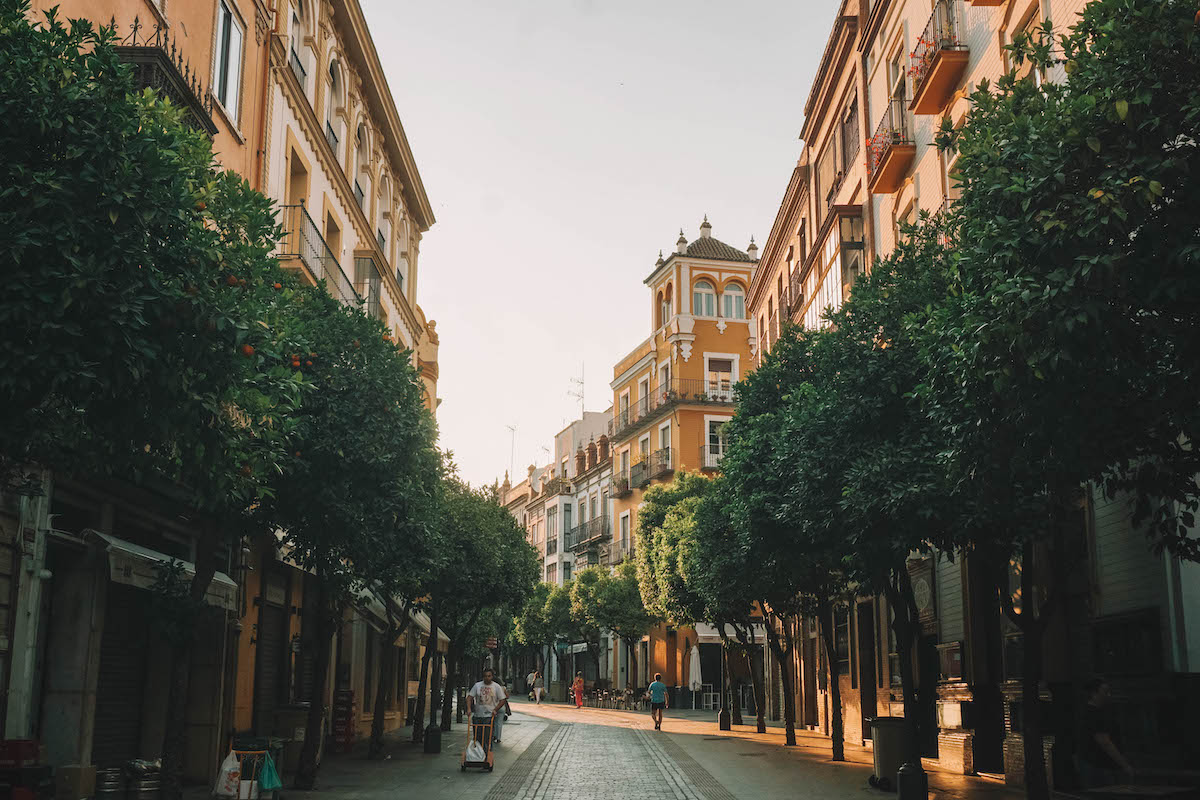
Use however much time you have left of your 3 days in Seville to explore any other areas interest you, or any neighborhoods you’d like to revisit. There are lots of beautiful streets, parks, and gardens to discover in Seville, so let your feet wander where they will!
Or, if you’re tired after nearly 3 full days on your feet, do as the Spaniards do and enjoy a cold glass of your favorite aperitif, nibble on some tapas, and watch the world go by!
Frequently Asked Questions
Hands down the best time to visit Seville is during the shoulder season. March / April and September / October are ideal since there will be fewer crowds, hotels will be cheaper, and you’ll avoid the worst of the heat.
I visited Seville at the end of May thinking I’d be able to beat the worst of the summer crowds and wouldn’t get too hot — wrong! I still wound up waiting in line for the most popular attractions in Seville, and I was constantly guzzling water to stay hydrated in the 90ºF – 100ºF heat.
Don’t get me wrong, I had an amazing visit! I was just a sweaty mess the whole time.
In a perfect world, you’d be able to spend at least three days in Seville (hence this handy itinerary I’ve created for you!). It’s the fourth largest city in Spain, and while the city center is compact enough to traverse on foot, there is SO MUCH to do here.
In the 3.5 days I had in Seville, I managed to pack in lots of fun activities. However, I had minimal downtime to rest and my siestas were quite short each day. So note that you can absolutely visit Seville in 3 days and see lots and lots, but you’ll want to set your alarm in the morning and prepare to be on your feet most of the day.
If you have three days in Seville (or fewer!), I recommend saving your “big meal” of the day for dinner, after you’ve enjoyed an afternoon siesta. The Spanish favor a leisurely dining experience, which is absolutely lovely but ultimately impractical for anyone trying to visit the top sights in just a handful of days.
Called Hispalis when ruled by the Romans, Seville is thought to have been settled in the 2nd century BCE. The city later flourished under Muslim rule before being conquered by the Christians in 1248 during the Reconquista. At that point, the Jews and Muslims were exiled from Seville, although their lasting impact on the local culture can still be felt today.
Seville rose to prominence once more following the discovery of the Americas. The Casa de Contratación (“House of Trade”) was established here to regulate trade between Spain and the Americas, making Seville the richest city in the country throughout the 16th century.
Today Seville is the most important inland port in Spain. Some of the top Seville attractions you may already have heard of include: the Plaza de España (a remnant of the 1929 Ibero-American Exhibition), the massive Gothic cathedral, and the 10th century Alcazar.
A Few Final Tips…
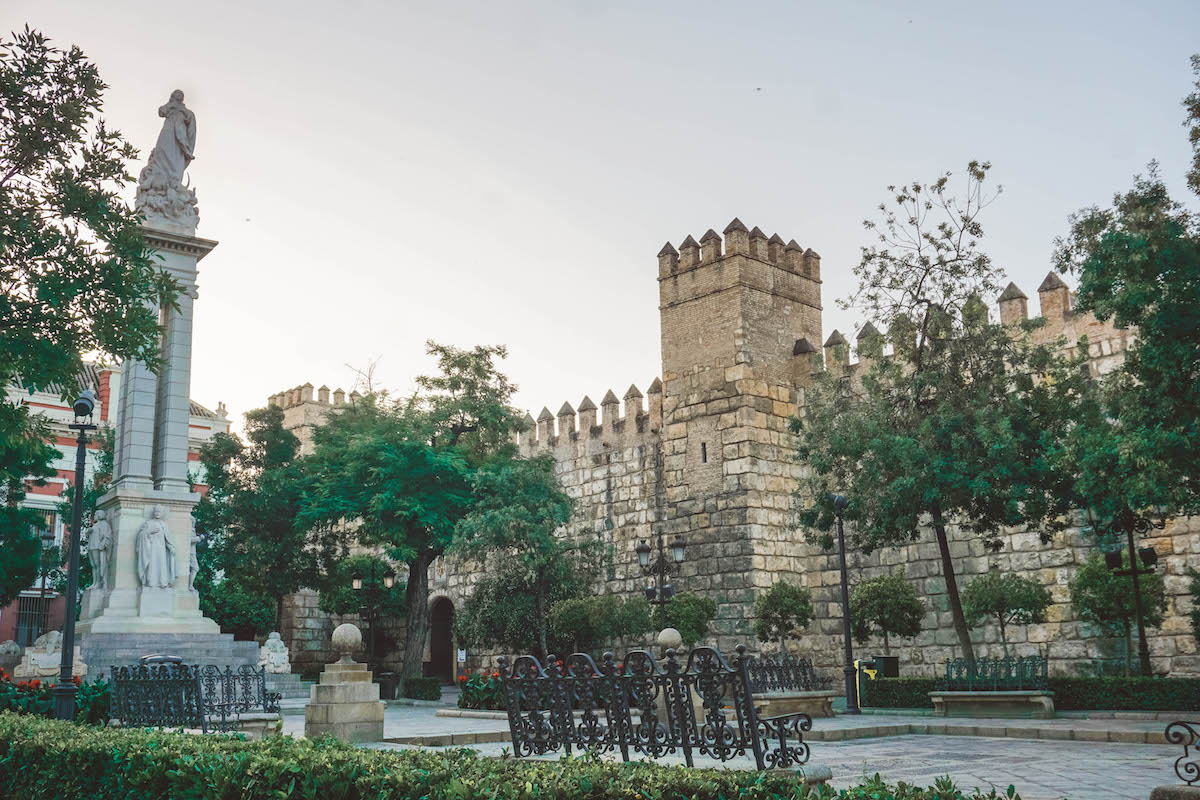
- Plan for a late-afternoon break: A daily siesta is a must, especially on hot summer days! You can still see everything on this 3-day itinerary for Seville even if you take an hour-long siesta.
- Check opening hours beforehand — Some attractions close mid-day due to the aforementioned daily siesta. The cathedral and Alcazar remain open all day, but smaller Seville attractions have a midday break.
- Getting around the city — All the attractions mentioned in this itinerary can be visited on foot. The city center is walkable and more compact than it looks on Google Maps. Still wear sturdy walking shoes, though!
- BRING WATER – So much water, especially if you’re visiting late spring through summer! You can easily get heat stroke in the hot Spanish summer, so chug lots of water, wear breathable clothing that protects you from the sun, and rest when needed.
- Eating meals — I didn’t list specific meal times in this Seville itinerary because meal times / durations will vary from person to person. Seville can be enjoyed as cheaply as you’d like; there are lots of grab-and-go options at bakeries as well as small supermarkets with pre-packaged items. Or, you can travel like me and enjoy a large, late dinner after your late-afternoon siesta to refuel after a day of walking.
Ready to Visit Seville, Spain?!

You can see and do a lot if you have just 3 days in Seville, but be ready to do a lot of walking. I wish I’d had more time in this gorgeous city, but on the plus side that means I’ll just have to go back again and again!
If you have any more questions on what to see in Seville in 3 days or about visiting the city in general, leave me a comment below!
Don’t forget to follow me on Instagram to keep up with my daily adventures in Berlin and beyond!

Leave A Reply!